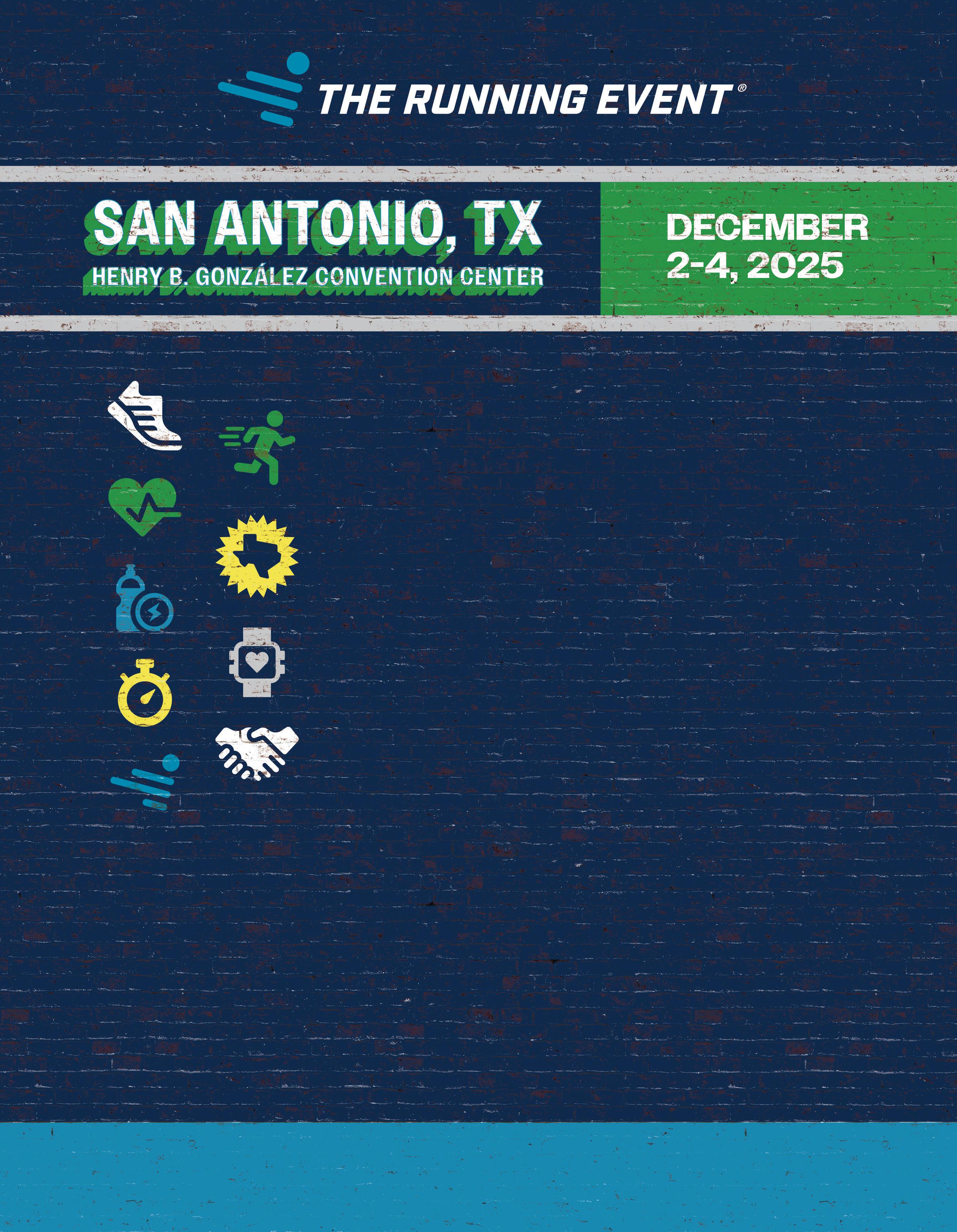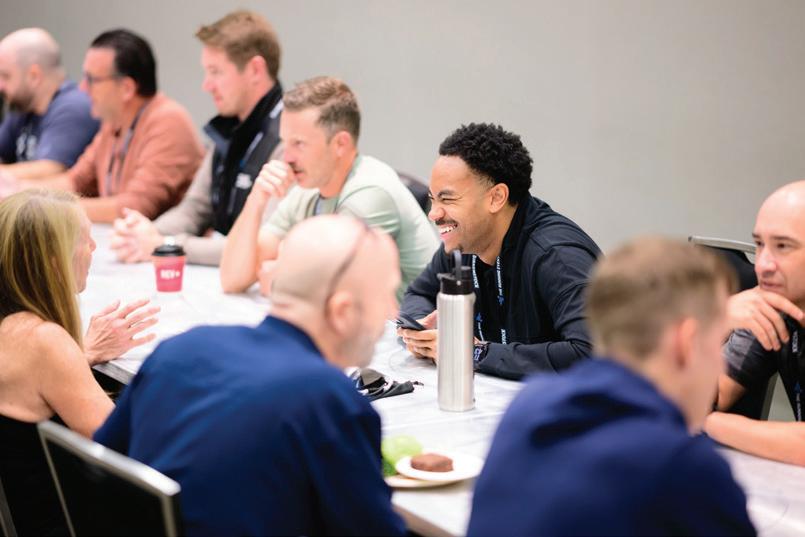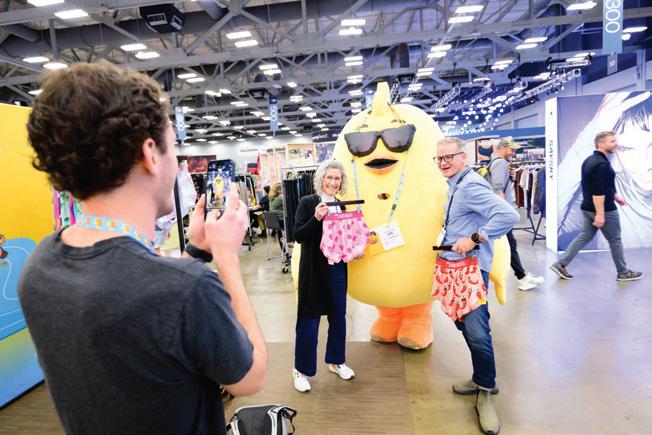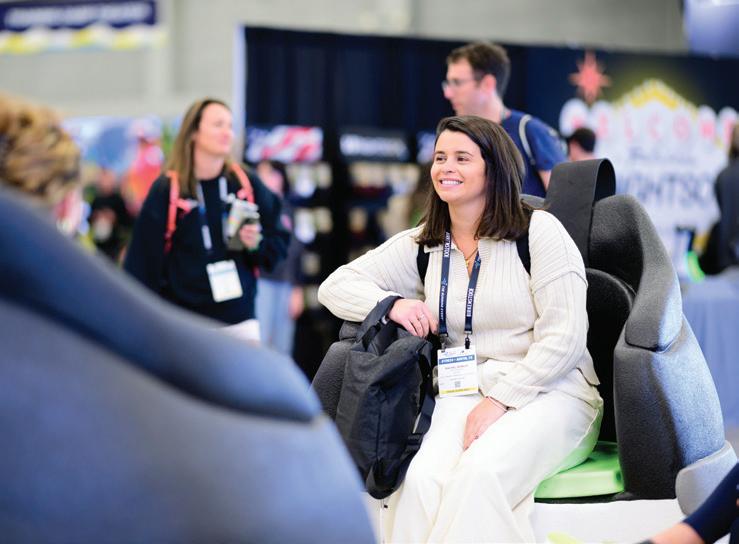WHY WE RUN
A psychology researcher says the secret to a PR might rest with the people running next to you.
By Danny Smith
As a psychology researcher, Lucas Hamilton was familiar with a phenomenon called “collective effervescence.” The term describes the feeling of human connection and unity during a shared event, such as a concert, religious service, sporting event or even standing in line for ice cream on a hot summer day.
As a runner, meanwhile, Hamilton pondered the uplifting qualities of race day. He then wondered if it was possible to catch “runner’s high” from other runners.
“A common piece of running advice many people hear, myself included, is to ‘run your own race,’ but you’re also running with people around you, which helps you feel like you’re not in it alone,” says Hamilton, an assistant professor of psychology at Augustana University in Sioux Falls, SD.
Combining his understanding of collective effervescence with his own experience at races, Hamilton began investigating if connections to strangers at a race was the “secret sauce” to a productive performance.
Research questions were born: Could people feel the “magic” of race day? And if so, Hamilton asked, how might it impact their results?
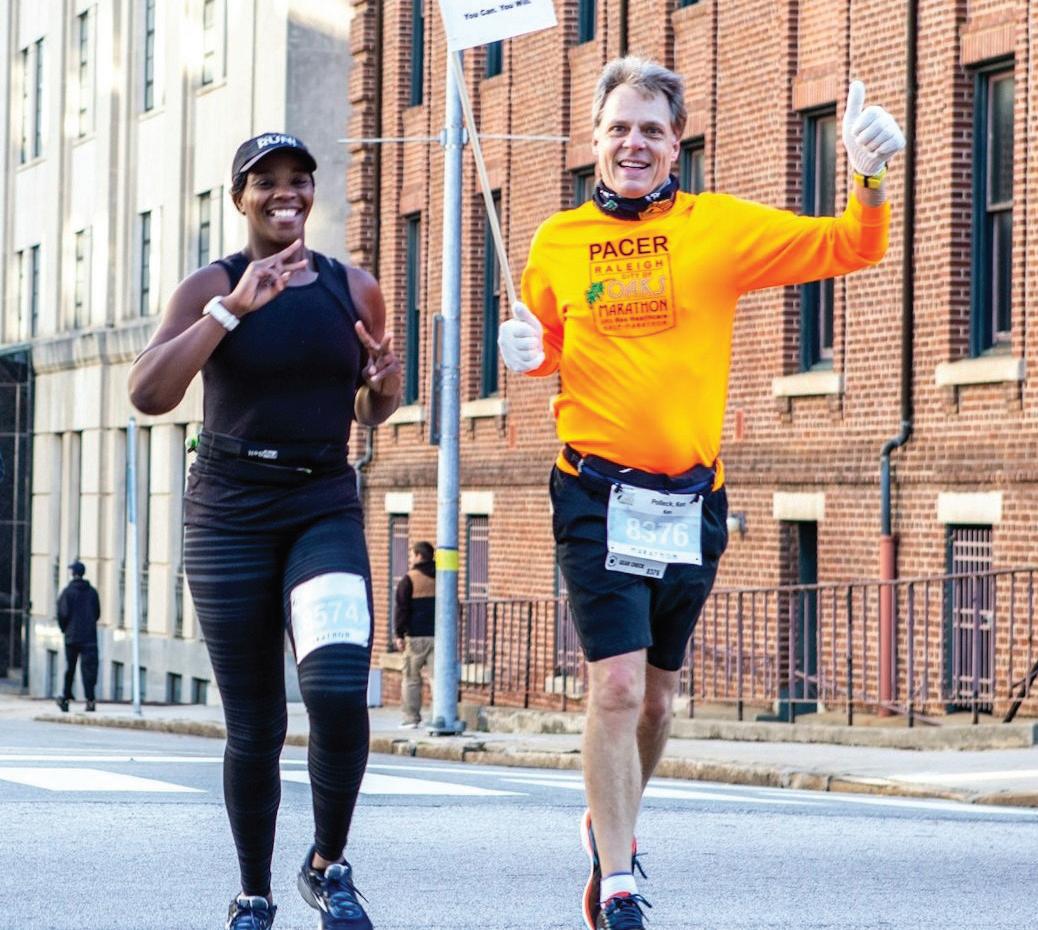


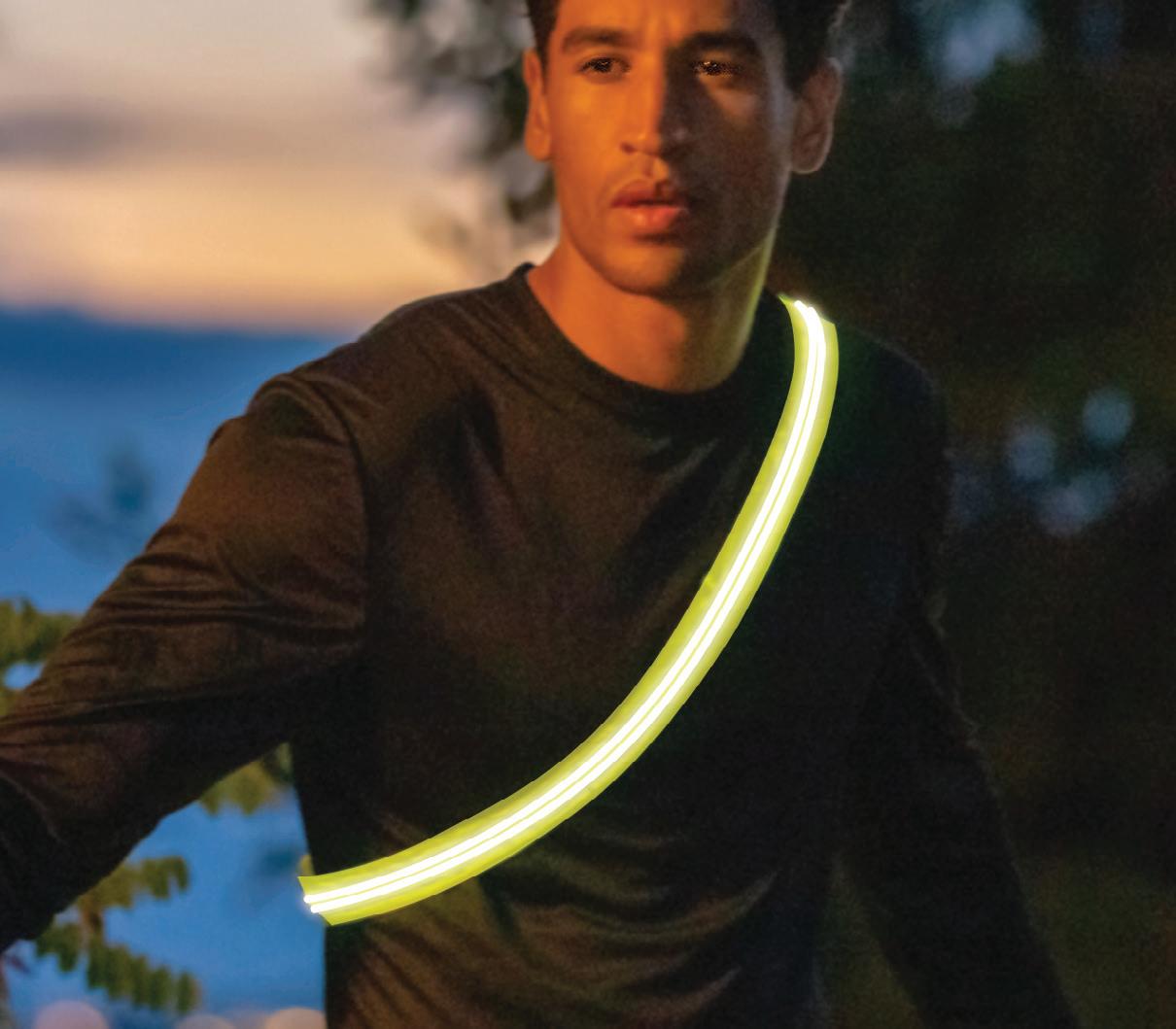
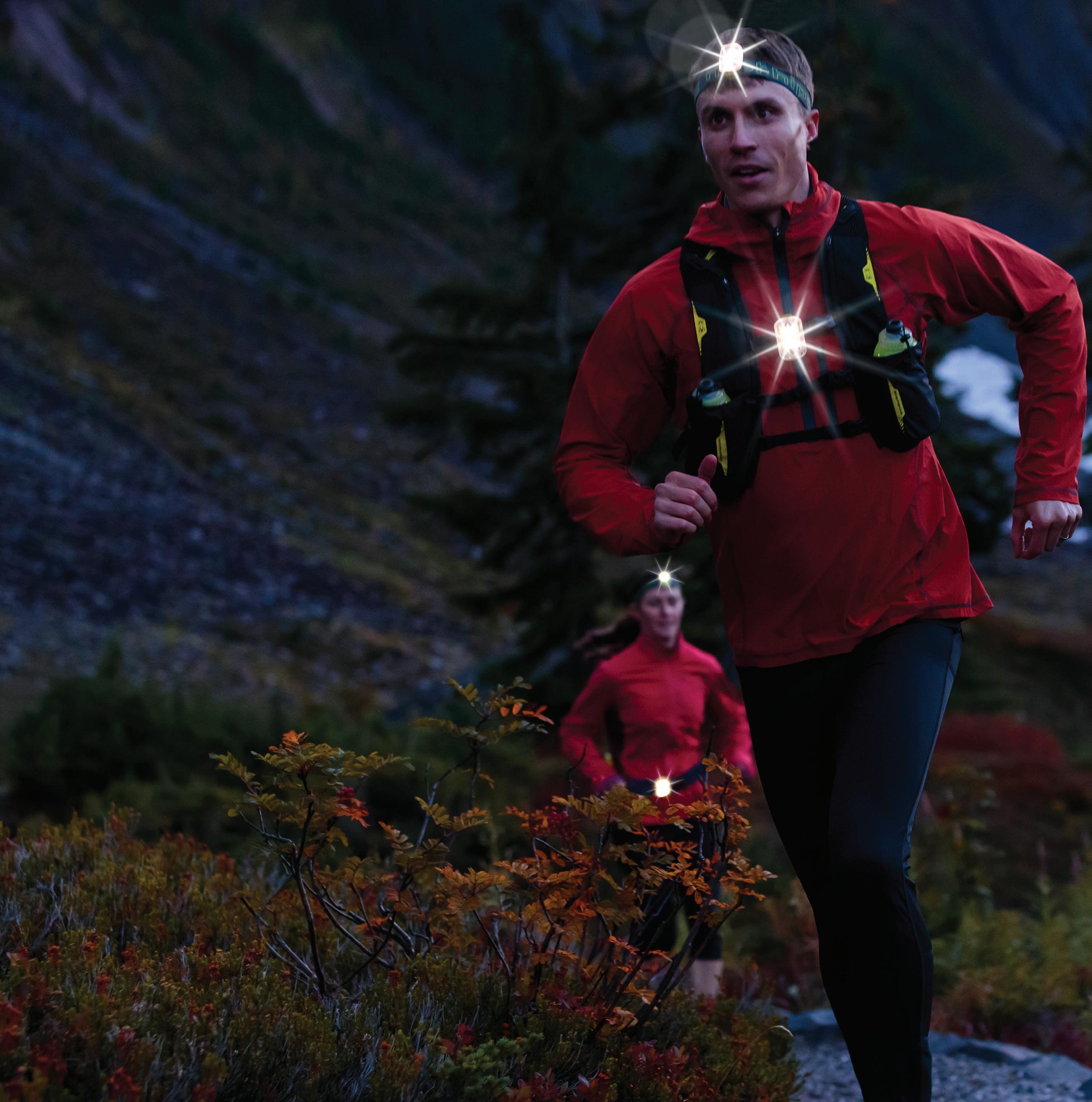
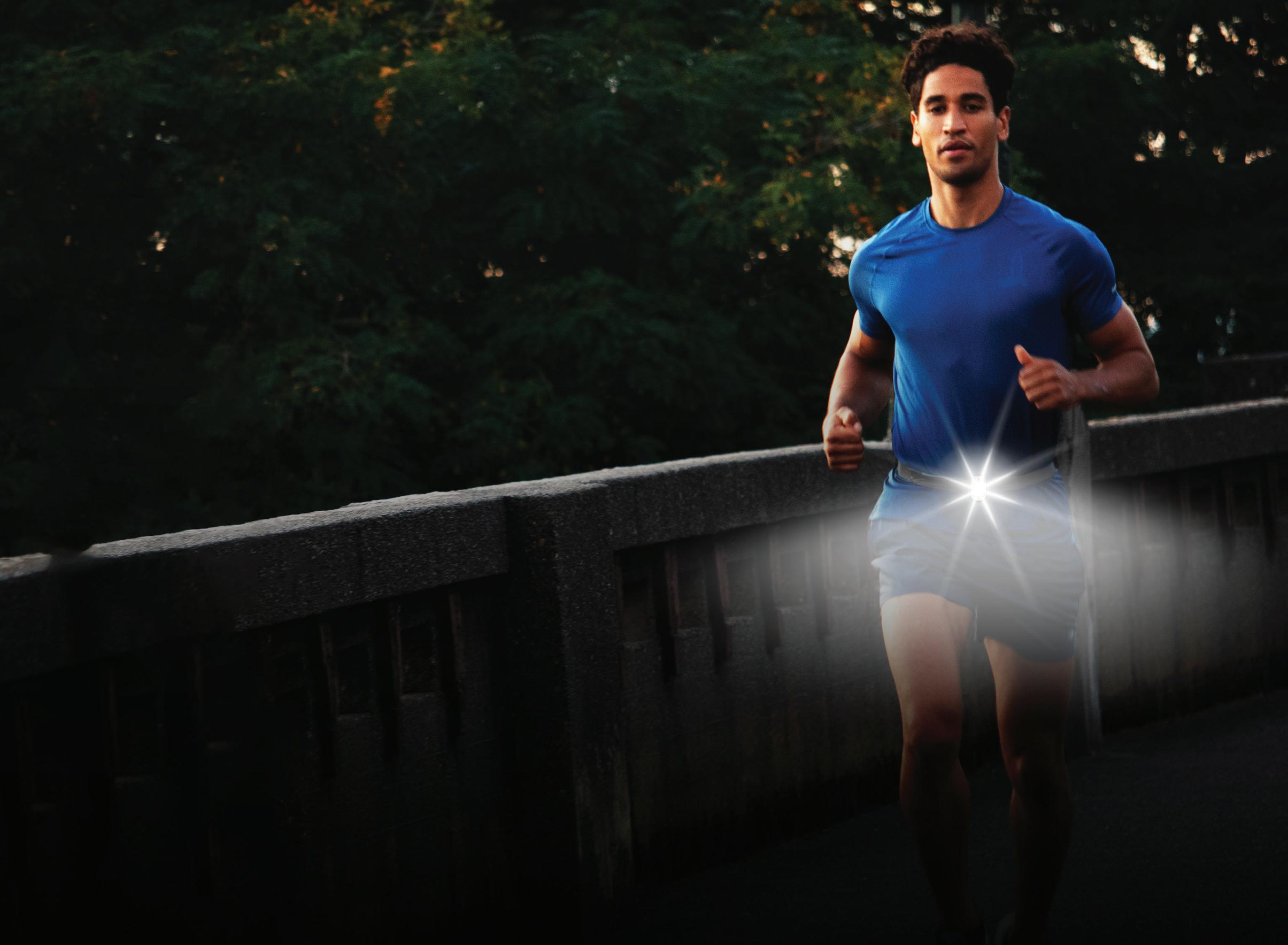
Why We Run (continued)
To answer his questions, Hamilton focused on the 8th Annual Sioux Falls Half Marathon: Skedaddle Weekend on May 17-18. The multi-day event includes the 13.1-mile Skedaddle as well as The Bryan Boys for Hope Zippy Mile.
Good Expo = PR?
At the event expo, 82 participants – about a quarter of the event’s registered runners –agreed to complete Hamilton’s short survey. He asked questions about feeling connected to others at the event and if the event felt like it had a greater purpose. For those who displayed feelings of collective effervescence, Hamilton wanted to know if those feelings might contribute to a PR or personal goal and then studied the results to find out.
After controlling for age and gender, Hamilton discovered racers who reported higher collective effervescence at the expo
were 20 percent more likely to post a new personal best.
“That number really jumped out to me,” Hamilton says, adding that the effect was not explained by having family and friends as support during the race nor experience level, although beginners were roughly 30 percent more likely to post a personal best.
Positive Post-Race Feelings
After the race, Hamilton then followed up with a second survey inquiring about loneliness and mood. He wanted to test if collective effervescence contributed to better post-race psychological benefits. Hamilton found people who maintained collective effervescence after the race experienced lower loneliness and increased positive emotions. In short, the magic of race day persisted.
“The survey results show how powerful an all-around race
experience can be,” Hamilton says. “A good race requires physical preparation, but a great race accounts for the mental and social aspects of this sport.”
For example, the Skedaddle’s aid stations were staffed by various social groups and familiar local faces and many people came to the expo to meet the half-marathon pacers they would follow.
“These social connections that happened before, during and after the race helped feed into that ethereal experience of collective effervescence and lead to new highs for many,” Hamilton says. “In sum, the race day ‘hype’ matters.”
Further Study
Encouraged by his early findings, Hamilton hopes to expand his research and survey runners at other events. He’s eager to examine what runners might do to prepare for a
strong performance, particularly by tapping into the collective effervescence phenomenon.
“Some folks come to packet pickup, grab their stuff and leave, but what if they instead connected with volunteers, other runners and pacers? If you feel connected to other runners, those positive feelings seem to support performance and then linger after race day,” Hamilton says.
He also wants to explore how race organizers might build connections among participants and enhance the race day experience to foster personal connections and unified spirit.
“Maybe it’s having a karaoke stand near the finish line or a meet-and-greet with pacers at a race expo, or maybe it’s frontloading the experience by hosting a group run on the course a few weeks prior,” Hamilton says. “A great race, it seems, isn’t only about oneself but also those who share the journey with us.” n
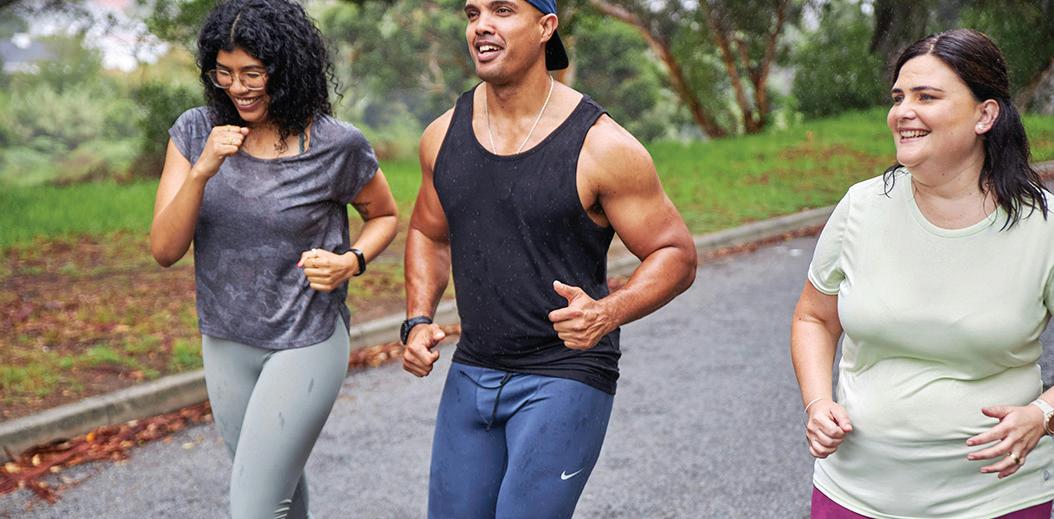
FULLY DECOUPLED HEEL DESIGN AN INSOLE FOR EVERY ACTIVITY #1 INSOLE IN RUN SPECIALTY

CLINICALLY PROVEN PAIN RELIEF SIZED FOR PERFECT ARCH SUPPORT AN ORTHOTIC FOR EVERY CONDITION
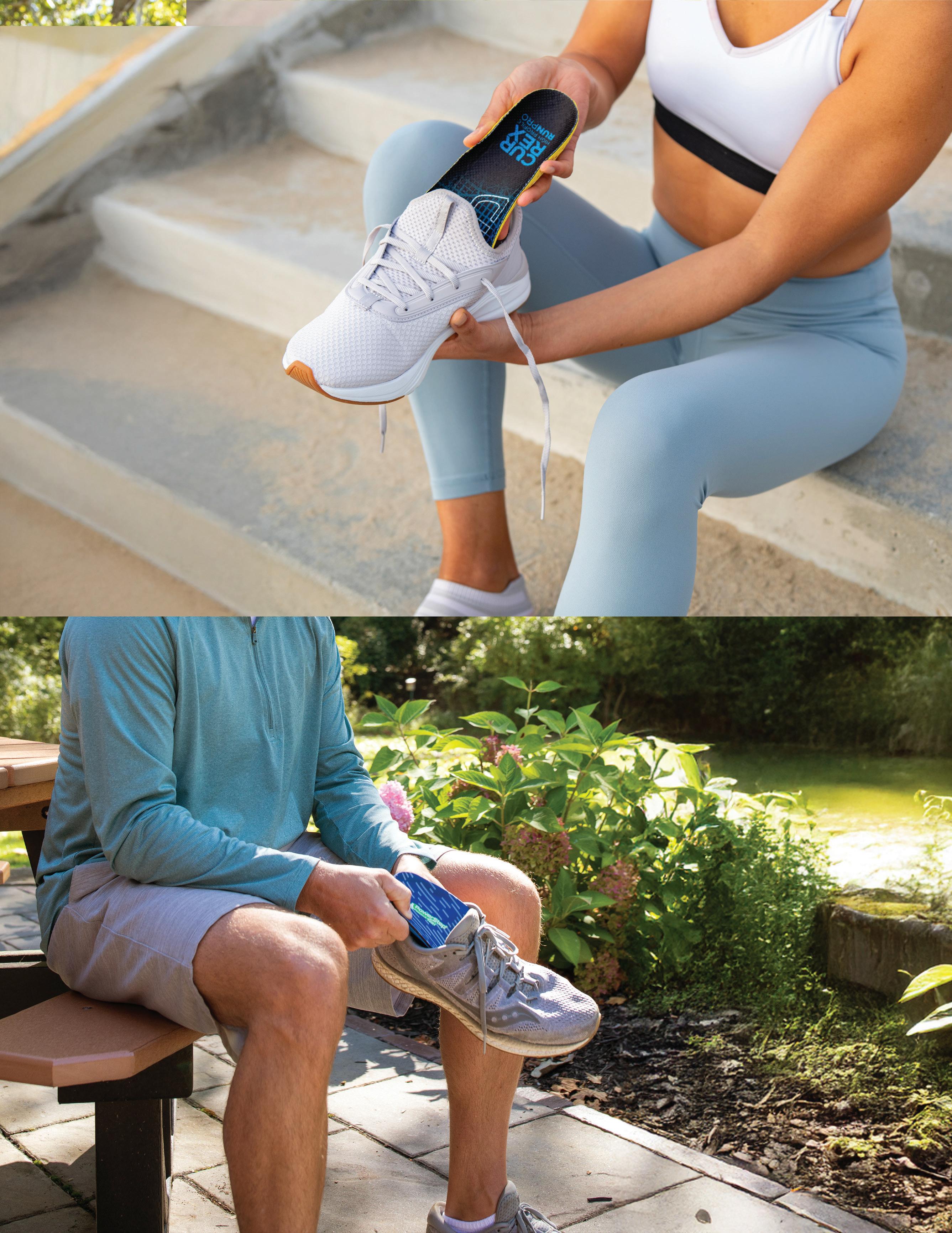

From Start To Finish Line
Seasoned voices from the front lines of race management and races sound off on the pros and cons. / By
Tom Griffen
Most run store operators, at some point in their tenure, have wondered what it would be like to operate an event management company alongside their retail operation. They’ve asked themselves why, or even if it makes good sense to take the plunge. They’ve pondered the certain challenges and opportunities it might afford. Contemplated which vendors, local businesses or community groups might be solid strategic partners. Or even if they’d be able to muster up the requisite team of dynamic and skilled staffers to make it a roaring success.
And if they have deliberated this much, they’re likely left wondering if such an effort would make good financial sense. Whatever the case, the innumerable moving parts and risks involved in such an undertaking are enough to make many in the industry
refrain. But are they missing out?
What follows is a sampling of four run retailers who’ve launched themselves headlong into race event management. One store’s now-thriving company began modestly with a 9/11 anniversary run. Another’s focus is less on profit and more on diversifying their chances to genuinely connect with the community. Another has timed races on active airways and the Kennedy Space Center. And still another began as a race management company, then years later got into the specialty retail game.
These four stories – told in their own words – are as educational as they are diverse. Their representative voices will give you the skinny on how they’ve managed to make things work. The most obvious takeaway is this — there’s no one formula for success, which is also what makes it so thrilling to go big with it.
JOHN’S BLUEGRASS RACING COMPANY
John’s Run/Walk Shop Lexington, KY
Matt Reno, Marketing and Events Director
Before establishing a proper race management company, John Sensenig, the original owner of John’s Run/Walk Shop, put on informal races in town. In 2010, we reimagined his efforts into John’s Bluegrass Racing Company as a charitable arm of our overall business. This allowed us to give it a more concerted effort rather than rely on one person to work on races when time allowed.
John’s Bluegrass Racing Company launched with the Iron Horse Half Marathon, an annual event held in Midway, KY. We currently have seven events on our calendar, ranging from one-milers to half marathons. The company is led by Eva Jackson, a race
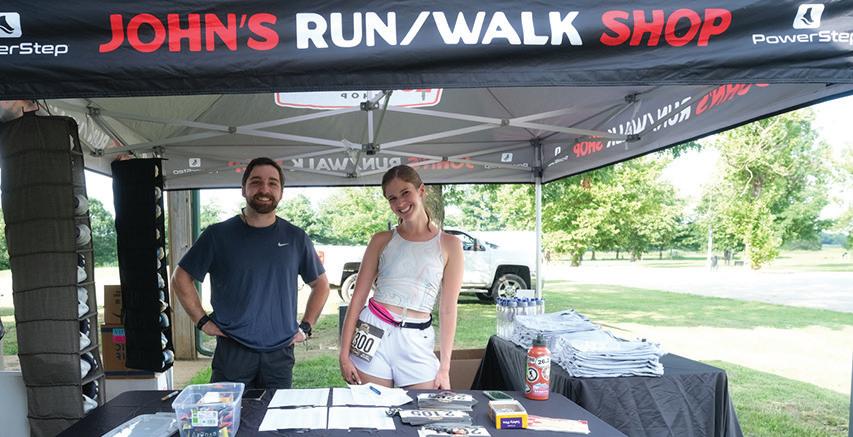
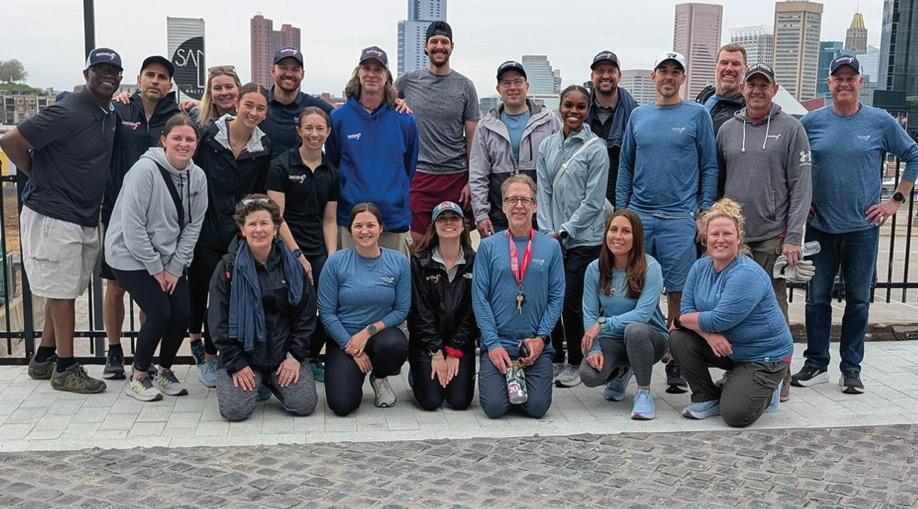
director and a full-time staff member at our retail store. She is supported by a handful of other enthusiastic staff members and gracious volunteers.
While operating a race management company is not directly a money-making endeavor, it is certainly worth it from both a business-building and community-connecting perspective. We believe that participants associate their positive race experiences with our store, thus creating new and loyal customers. Managing races also helps us strengthen relationships with vendors while giving them new and innovative ways to connect their products to our customer base.
Best of all, operating our company provides different avenues for community outreach. Our races require us to work closely
with local non-profits, food vendors and city officials to design and deliver fun and healthy activities for active people in Central Kentucky.
If you’re considering starting a race management company, don’t underestimate the time commitment that comes with such an undertaking. Even planning one race involves a hefty load of coordination with many different people and other moving parts. We suggest you make sure there’s at least one staff member who has dedicated hours available every week to focus on race management.
Also, it makes good sense to leverage existing partnerships. Work with your vendors in a way that ensures mutual benefits to each of your business and the participants of your unforgettable events.
CHARM CITY RUN EVENTS Charm City Run
Various Locations in Maryland and Delaware
Will Murdoch, Director of
Events
Charm City Run Events was born out of a desire to create amazing experiences for runners and walkers in our community. It started in 2002 on the first anniversary of 9/11 with a huge run in downtown Baltimore to honor fallen heroes and raise funds for first responders. We currently have five full-time team members and 33 part-time staff to help execute packet pickups and weekend events. We own 14 events and a XC series for kids. We also manage an additional 24 events for local clients.
There is a ton of excitement around running and walking right now and people are looking for unique experiences and
big race milestones. We see new people at every race, so we have the fortunate opportunity to show these folks how amazing, friendly and welcoming our industry is and how rewarding hitting that finish line can be. Our biggest challenge is delivering an A+ experience in every facet of event management. Another is the gamut of hidden costs that are necessary to provide a safe and enjoyable event. Our registration fees can only increase so much, so we have to get creative and work with great partners to offset many recent expenditure increases.
Operating a business like this can be extremely rewarding. The perks include being surrounded by incredibly talented, hardworking and kind people. We also get to watch people cross the finish line. It’s transformative
From Start To Finish LIne (continued)
for everyone involved.
Race management can be a profitable way to expand relationships outside of our retail doors. Everything needs to be managed closely and each decision is evaluated to make sure it stays true to two things First, it needs to make financial sense, and second, it’s in line with our core values.
There’s a lot to think about when operating an event management company, but really it comes down to people. Do you have someone on your team, or know someone in your community, who is passionate about races and can bring people together? Can they build a team that will enliven your vision?
There is a ton that goes into organizing a successful event, so before you take it on, talk to others in the industry who are already doing it. Start small, give yourself sufficient time to plan, then build out a smart budget.
I have the pleasure of being a part of a leadership team that supports me, helps whenever I need a hand and loves what we do. My team works tirelessly to bring our ideas to life to deliver an amazing experience at every race. This business can be exhausting, but it’s also humbling. Having the right people around you makes the tough days better and the great days even more memorable.
YELLOWJACKET RACING
Fleet Feet
Multiple locations in Rochester and Buffalo
Ellen Brenner and David (Boots) Boutillier, Owners
YellowJacket Racing (YJR) was founded in 1998 by David Boutillier (aka Boots). He created YJR so he could bring races
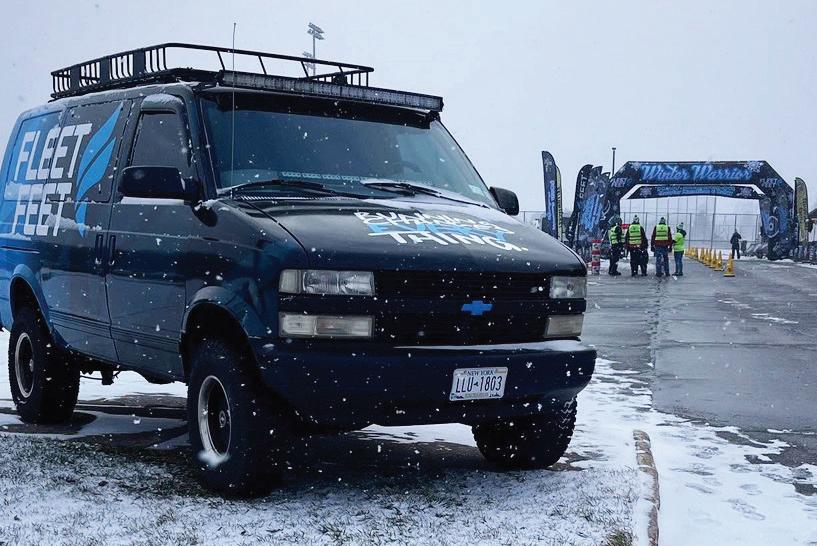
to Rochester that were similar to those he experienced while racing around the world when he was younger. YJR is Boots’ creative outlet. It’s where he can make something out of nothing and see it come alive in an exuberant way.
In its early years, Boots operated YJR with the help of his family members, mainly his mom. He ran the business out of the back of a Chevrolet Astro van—a vehicle I [Ellen] despised. But I held off giving the greenlight to replace it while he was in the throes of growing the business.
In 2004, YJR’s reach expanded tremendously when we opened Fleet Feet Rochester. YJR has gone through many staffing iterations over the years, having upwards of 10 staff at one point. COVID taught us to operate more efficiently and now there are two full-timers and six part-timers
who support YJR events.
In 2004, YJR had eight races. Pre-COVID we had more than 60 and worked 200 events annually. But that turned out to be too much, so we decided to shift gears. Now we own 40-ish events and provide services to four additional races. The refocus allowed us to offer better support to all races, including the local youth XC and track scene, which took a big hit during lockdown. We remember the pre-COVID heyday and dream of all those participants coming back. Things are definitely getting better, but we are not yet seeing the numbers we once had.
Currently, YJR’s biggest challenge is staffing. Expenses are also tough since it’s hard to manage how much things are going to cost each year. This includes everything from hiring police, booking facilities and the general costs of amenities.
Working with vendors and sponsorships is crucial. Our goal is to make sure partners get exposure while educating participants about their offerings.
These days we own three Fleet Feet stores in western New York. We have strong training programs and YJR benefits greatly from that. The race management company makes money and profits are reinvested back into the businesses. Our vision has always been about providing experiences and helping people get fit. It may sound cliché, but we believe that as long as we can live, we are good.
It’s hard work to be in the event production business. The job is laborious, time consuming and can be financially draining. You need a certain mindset, work ethic and passion to create great events. Plus, the hours can be rough. Lots of early wake-ups and late-nighters.




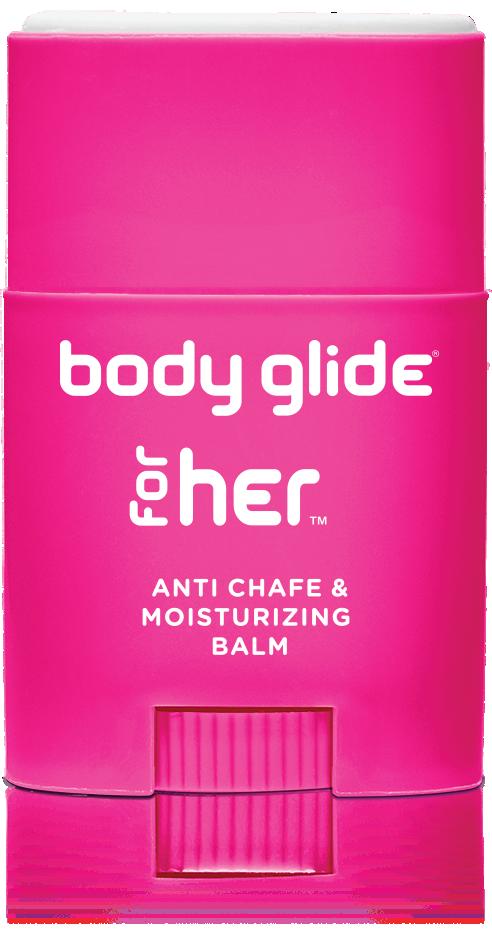
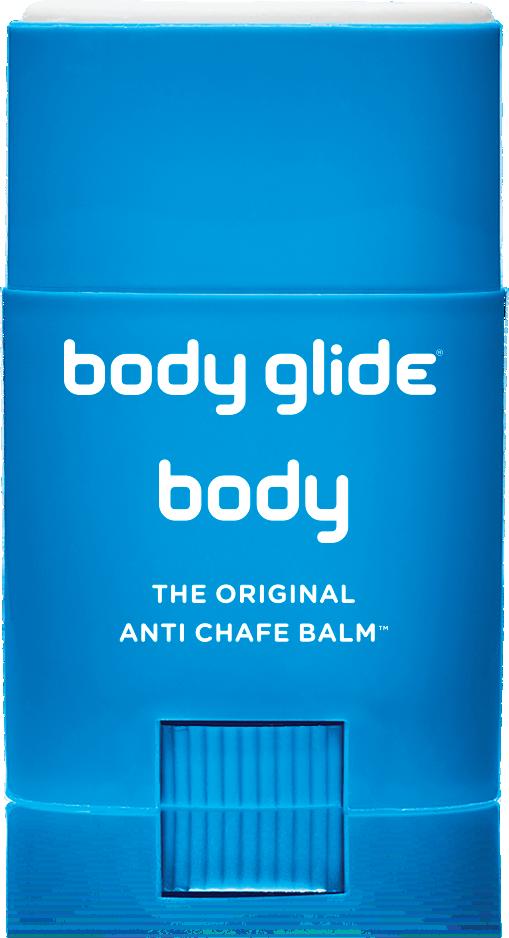
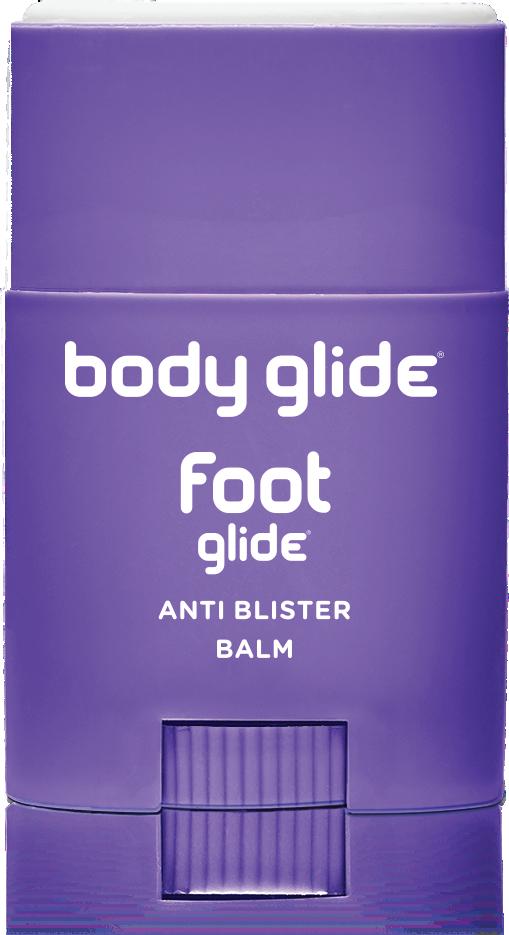
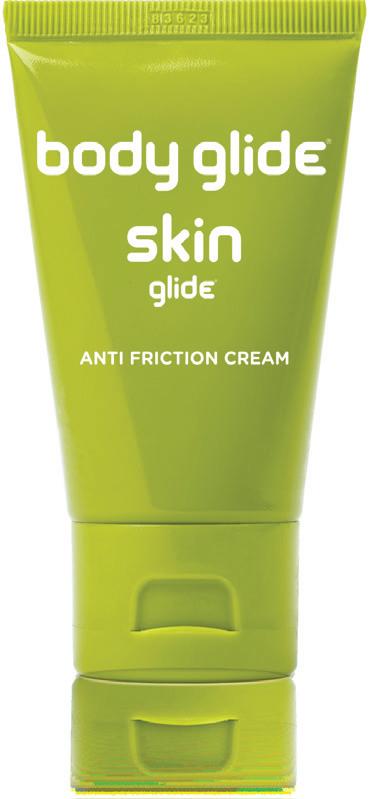
From Start To Finish LIne (continued)
If you can manage this, then go for it. But never forget that each event will be someone’s first race or hundredth, so it needs to be extra special for both types of participants.
For our Rochester store’s 20th anniversary, I finally opened the company’s wallet so YJR could purchase a new vehicle. We purchased a 1996 Chevy Astro that gets all the attention everywhere we take it. It’s a really cool and nostalgic nod to our roots.
In 2022, YJR’s warehouse burned to the ground. All that remained was one vehicle with timing equipment from an event that hadn’t yet been unloaded. Two weeks later, and with big help from the community, we produced a 900-person event with limited supplies. The setup looked like something from the old days, but the tragedy forced us to remember how far we’d come.
If you embark on this journey, we suggest you innovate, not imitate. Create new things that will add to your community. Differentiate yourself. That’s what will make you interesting.
RUNNING ZONE RACE MANAGEMENT
Running Zone
Melbourne, FL
Pete Vaughn, President
Running Zone (retail) was founded in 2003 by Don and Denise Piercy. In 2007, after helping with local races for several years, they formally incorporated Running Zone Race Management and became a Chronotrack timing partner. Running Zone Race Management now times and manages more than 70 events, 12 of which are our own

productions. Though some retail staff work both the floor and our race events, most of our race management employees work exclusively for that side of the business.
Our company offers the full litany of race management services: initial planning, course design, pre-event registration and all the details of race day itself. Services include the entirety of the race’s setup and all details of finish line management. We do it all.
As a full-service race management provider and not just a timing company, we function under a unique business model. Successful operation is time and labor intensive. Without a retail store to partner with, we wouldn’t be nearly as successful. Similarly, it’s hard to imagine having a retail store without an events partnership of some sort.
Our biggest challenges as a timing/management company revolve around staffing. Typical races demand the toughest sorts of hours to fill — generally 3:00
a.m. to 9:00 a.m. on a Saturday morning. Additionally, our lower-cost competition attracts participants away from our events, even though participants usually come back after having a lesser experience. There’s also the challenges of being a race director. Cost increases along the supply chain and increased difficulty with municipalities on permitting create the biggest headaches.
Aside from the existing relationships to our retail store, we have struggled with soliciting race sponsors. The sheer volume of our events is to blame.
It’s amazing to see how Running Zone Race Management creates a circular customer base. People get fit for shoes in the store, start a run/walk program, then ultimately end up doing our events. No matter where they start in this cycle, one step always leads to another.
Regardless of how many races you’ve run, I suggest that you volunteer at races before even
considering opening your own event management business. There are countless behind-thescenes details you need to learn about how the sausage gets made.
As far as event outcomes goes, we see polar opposites on a weekly basis. The success stories of people doing their first 5K, the utter chaos of a pre-race environment and the devastating pain of participants’ injuries and DNFs. Managing races includes it all.
We are fortunate to have been a part of many unique circumstances. We’ve timed races at the space shuttle landing facility at Kennedy Space Center. We’ve managed other events that took place on active airfields, coursed through farms with roaming cattle and we even did a race across daylight savings where participants finish with a negative time. We also had the opportunity to be part of the timing team for the 2024 Olympic Team Trials Marathon in Orlando. What a ride it’s been! n
Bring your winning Scratch Ticket and Test out all Products at Booth #17084


MINI MASSAGE GUN
2.0


SCRAPING + VIBRATION
• BREAKS UP ADHESIONS, MOBILIZING SOFT TISSUE
• PROMOTES FLEXIBILITY
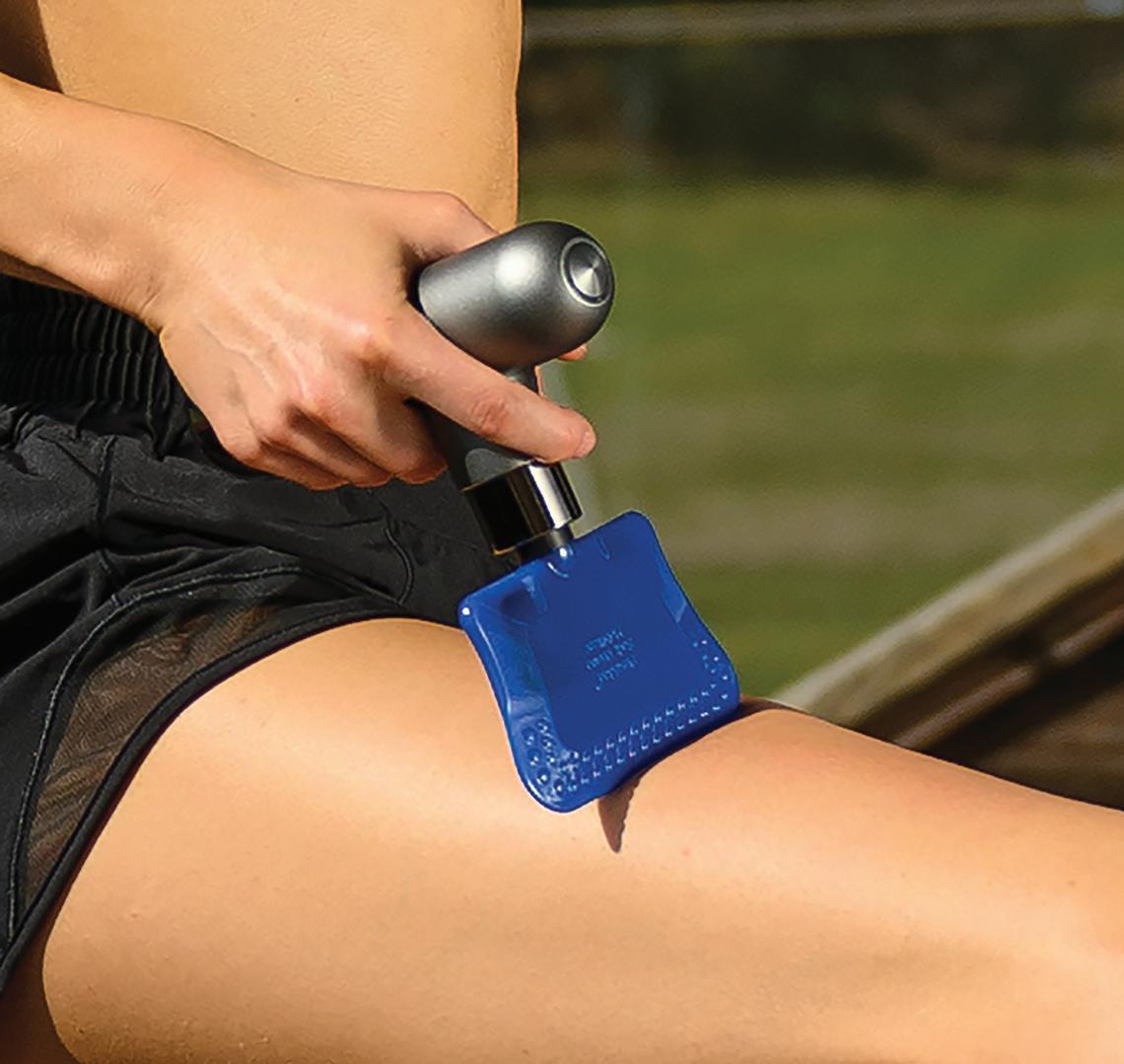

Featuring FlexEdge® Attachment FLEXIBLE EDGE GOES DEEPER INTO FASCIA
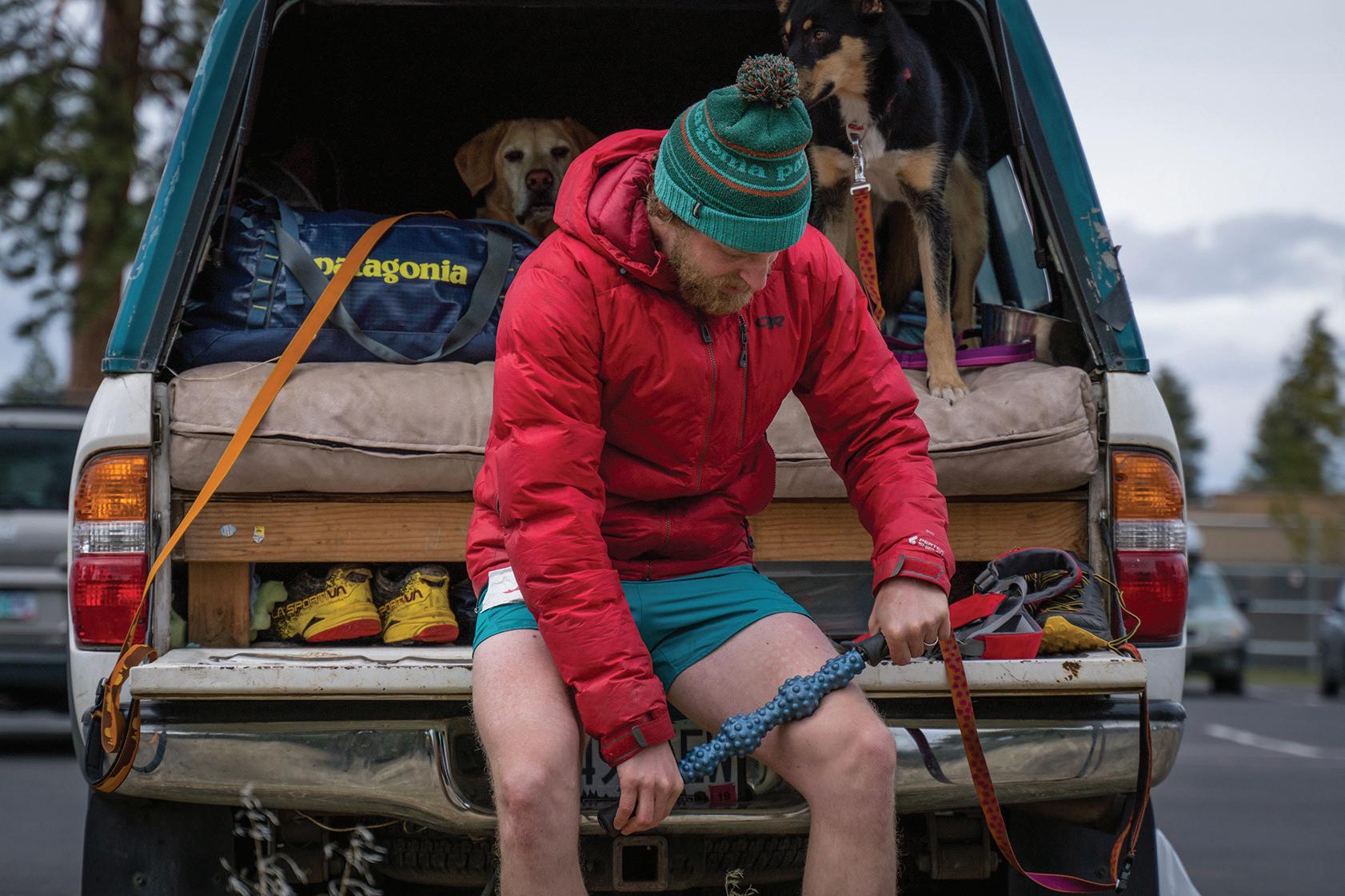
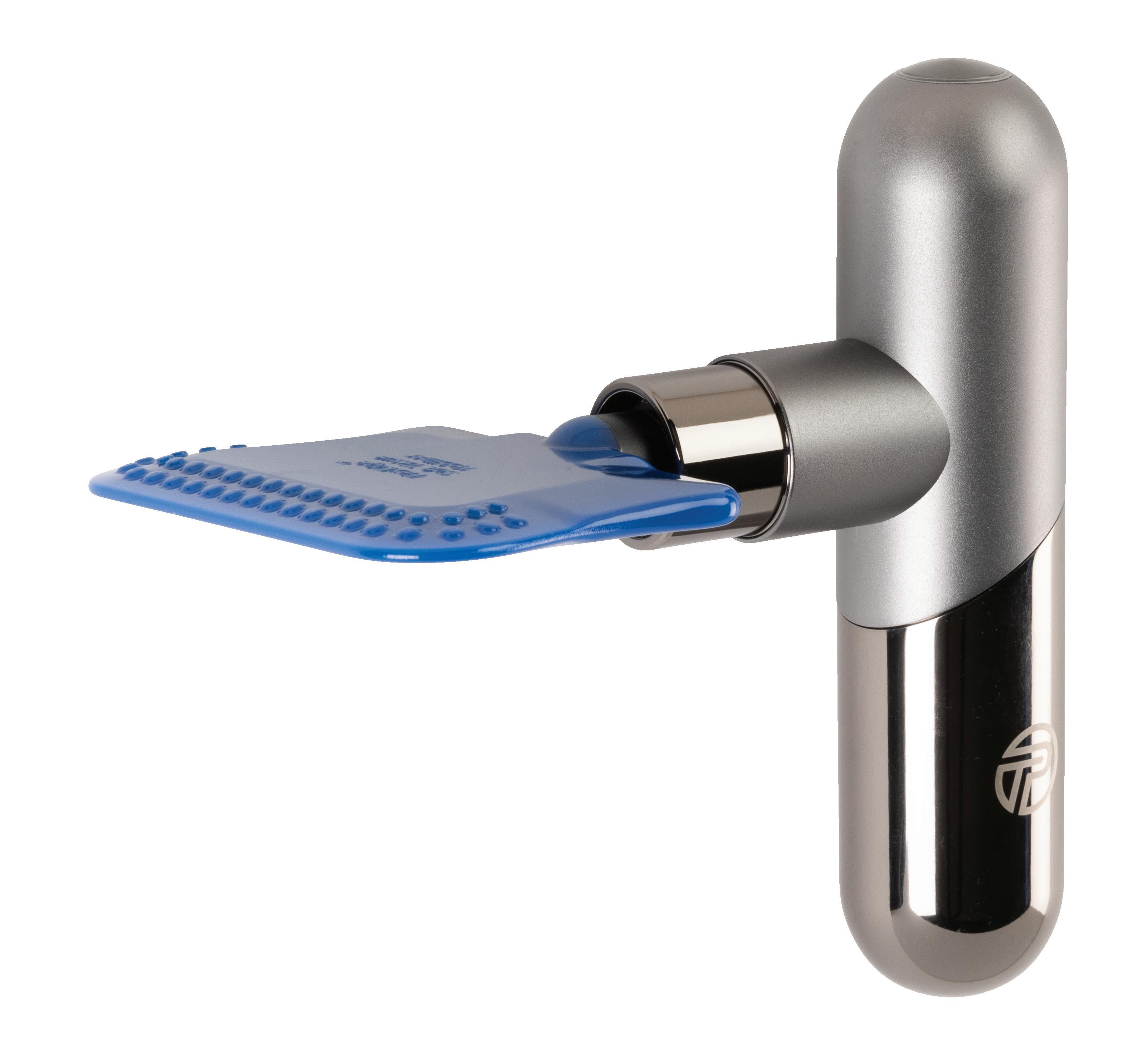

Powerful motor and long lasting battery within a light,
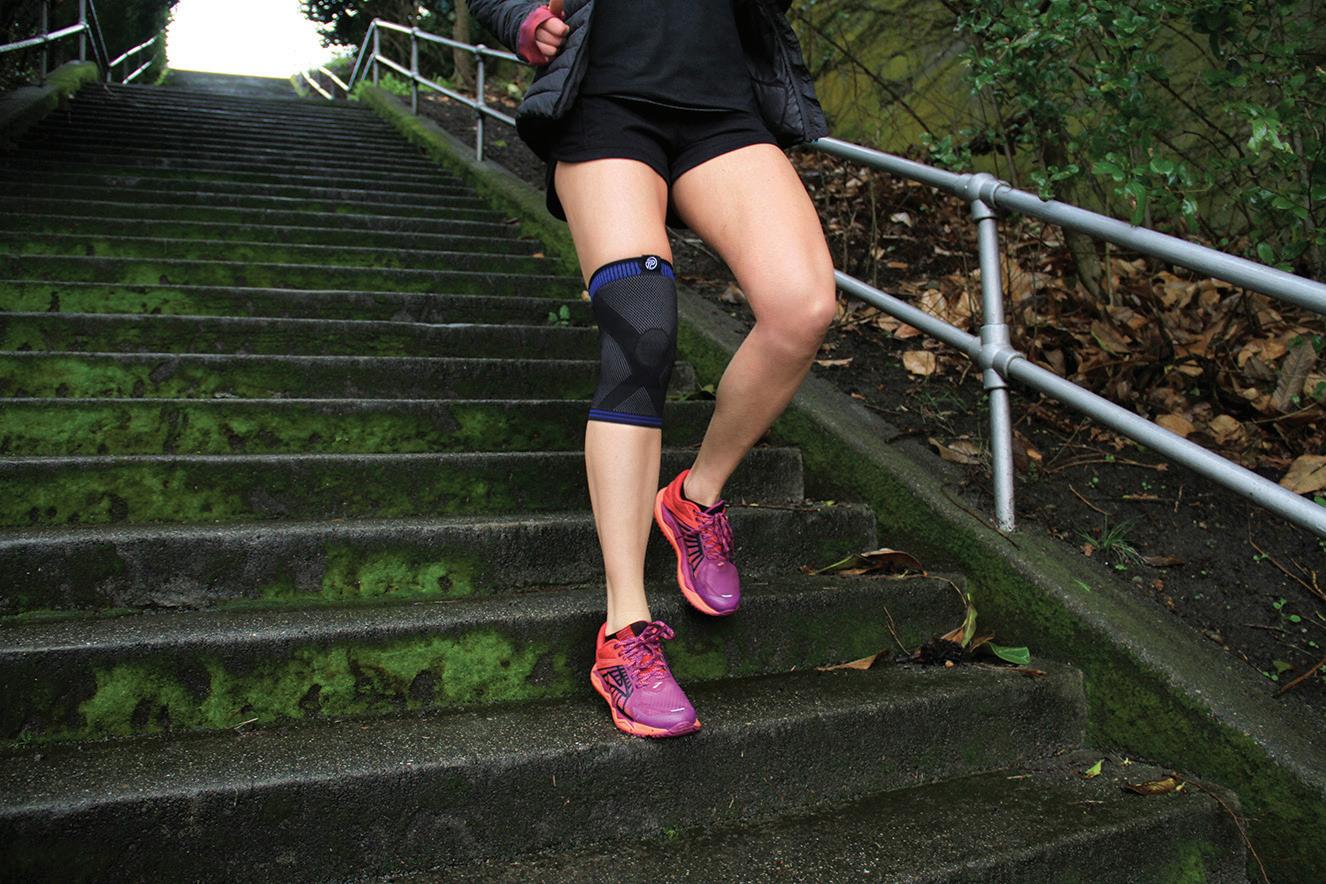

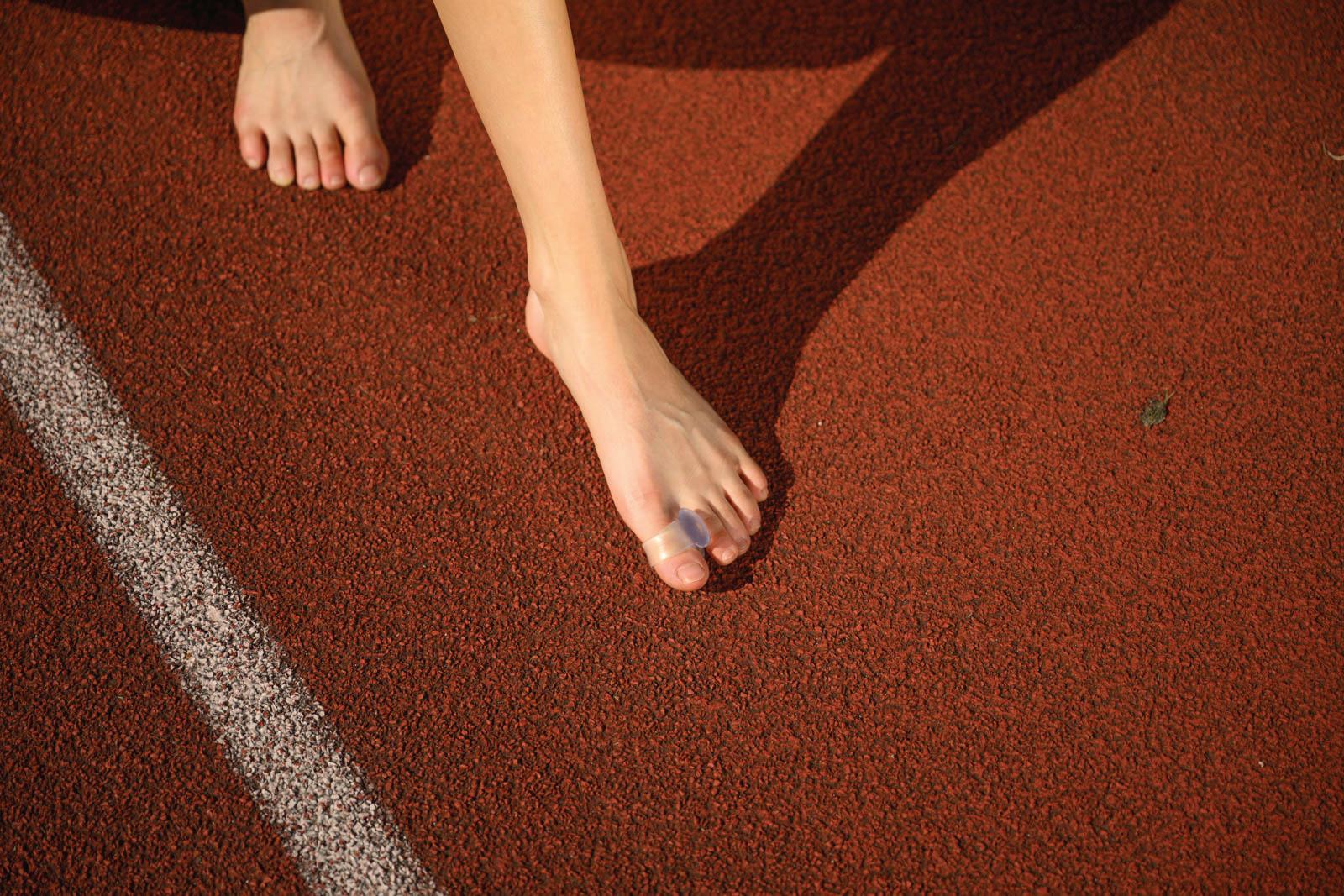

Collaborate for Success The Racing Issue
Three prominent race directors offer insight into how to approach the endurance event business. /
By Anna Gimre
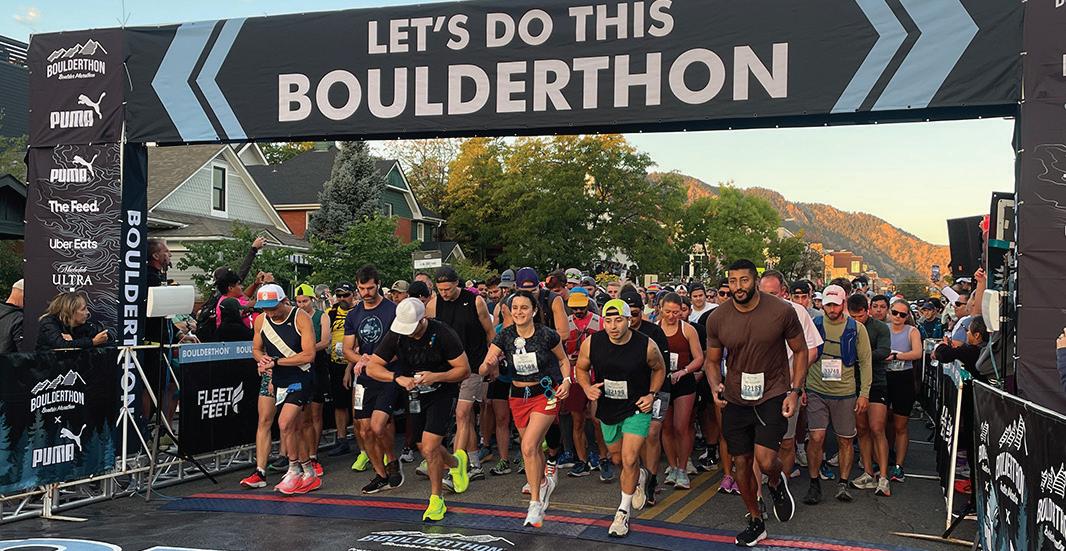
While race directors take the lead in the endurance event space, it takes a village to produce these events, whether they host 100 or 50,000-plus runners. This village often includes the help of other event professionals, sponsors and retailers.
In the unique space of endurance sports, it takes flexibility and collaboration to execute ever-changing business strategies for success. Race directors and their trusted partners around the world are continuing to adapt their business practices to the rapidly changing industry to keep up with the demand that attracts millions of participants.
Running Insight reached out to three industry leaders to gather their insights around the changing industry and the importance of these external relationships in order to grow
their events. Here in this virtual roundtable discussion is advice from those leaders in the field.
Phil Dumontet: CEO of Brooksee, the endurance event production and service company behind the Las Vegas Marathon, Portland Marathon, Mesa Marathon, Phoenix Marathon and REVEL Race Series. Founder of Boulderthon, the city’s signature marathon series.
Mike Bone: President and CEO of Spectrum Sports Management & Timing Services, which produces notable events in California, including the Run Catalina Island race series, LA Tri series, Bike The Coast and more.
Charlie Mercer: CEO at Capstone Event Group, a sports marketing and event management company with its own portfolio of 10 events attracting 40,000 participants annually.
Running Insight: Have you experienced any noticeable shift in the business side of the endurance event industry, and if so, what is it?
Phil Dumontet: Absolutely, it’s an exciting time for the industry. We’re in what I’d call the Third Great Running Boom. The tailwinds are strong and we’re seeing both explosive interest and compelling shifts in who is participating and why. Gen Z is driving a lot of this growth, especially young women under 30. There’s also a huge increase in social and value-driven running — people are joining run clubs not just to race, but to connect, build community and live healthier, more purposeful lives. That said, costs are rising – everything from permits to production – so being strategic and efficient is more important than ever.
Mike Bone: The biggest shift we have
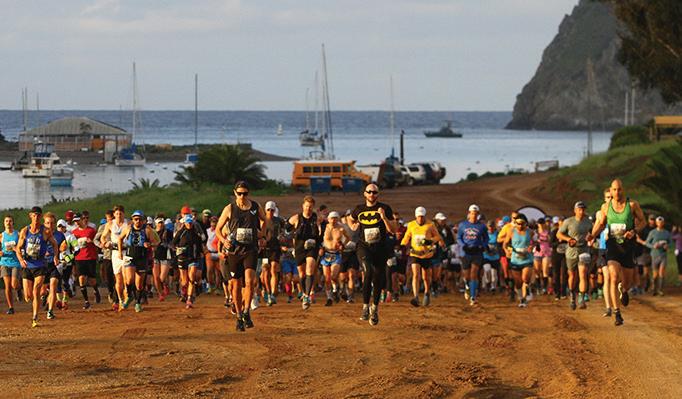
experienced all has to do with cost and expenses. Cities, at least in Southern California, seem to have targeted events to help rebuild their revenue postpandemic. Permits have gone up, insurance requirements have gone up and certainly safety requirements, procedures and costs have increased dramatically. In Southern California the costs of employees have skyrocketed and we have had to pivot from 1099 staff to salaried/ hourly staff and the insurance and costs of such staff.
Charlie Mercer: I’ve been in the industry for 12 years and I’ve never felt this degree of optimism — between relief from finally bouncing back from COVID, the continued upward trend in participation and the fact that
younger generations are turning to running as a desirable way to socialize, it’s an exciting time. There are challenges, as there always will be, but the consistent level of optimism among those in our industry feels different to me.”
What is your advice for securing sponsors/partners and how do you build that relationship for a longterm partnership?
Dumontet: Think creatively and start from an authentic place. Ask yourself: What brands do I genuinely respect and use? What values do we share Successful partnerships are built on mutual benefit. Come to the table with an idea that delivers value to both sides.
For example:
• Lululemon was a natural partner for our VIP program. Their brand aligns perfectly with the experience we offer –post-race massage, breakfast, private bathrooms – all bundled into a premium, wellness-driven experience.
• Frontier Airlines wanted to connect with runners flying into their Denver hub, so we launched the Run Clubs Fly Free initiative. We gave the top 20 run clubs in America $40K in flights — great exposure for them, a huge boost in race attendance for us and a ton of goodwill.
• Uber Eats is back for the third consecutive year as a top-tier partner and this time they’re putting the spotlight on the incredible variety of local options right here in Boulder.
After a long training run, marathon, or race, who wants to cook — or even go out? It’s such a perfect partnership. This year, event director Alexa Squillaro has taken it a step further with the IRL Eats Marketplace, bringing the richness of Uber Eats’ digital platform to life at the race finish. Runners can explore a wide range of offerings from local partners — experiencing firsthand the convenience and diversity that makes Uber Eats the go-to choice.
Bone: We try to build some equity or ownership into our sponsorships. When we signed with Hi Tec for Run Catalina’s title sponsor, we rolled out the Hi Tec Triple Crown to encourage runners to sign up for and run all three Catalina Island races

“Think creatively and start from an authentic place. Ask yourself: What brands do I genuinely respect and use? What values do we share? Successful partnerships are built on mutual benefit.”
Phil Dumontet, Brooksee
TRE2025 Education Spotlight
Why Run Clubs Are the New Growth Channel for Retailers: A Boulderthon Case Study.
This session will explore how run clubs are rapidly emerging as the ultimate growth engine for retailers, races, and brands. Moderated by Michael Clemons, director of operations at Running USA, the speakers include Phil Dumontet, CEO of Brooksee; Emilio Anaya, Fleet Feet Boulder, Bailey ness, Cooldown and Ross Rutherford, Cheribundi. The conversation will reveal how these communities are reshaping engagement, loyalty, and marketing in the running world. Attendees will gain practical strategies to collaborate with races, run clubs and brands, execute high-impact grassroots marketing campaigns, and turn runners into repeat customers. This session will show how the industry can unite and plug into the next wave of running.
Does your race have a relationship with a retailer? How does it benefit your overall event?
Dumontet: Yes, we have a great relationship with Fleet Feet Colorado. They’ve become a community hub where our runners can meet and connect, test the latest gear (especially from our title sponsor Puma) and hear from Olympians and elite athletes. It’s not just retail — it’s community building. And running is simply more fun when
you do it with friends.
Bone: We have a few races that work with shoe retailers and on Catalina Island a few restaurants. I do believe that these retailers bring a benefit through the overall experience of going to a retailer for last-minute supplies, or a pre-race meal, discounts and just helping to overall set the ambiance of the race.
Mercer: Yes. Retailers add a lot of value to events like ours — at large events with expos
as well as smaller events where we might host packet pick-up at the retail location. They offer products that runners are looking for, have knowledgeable staff who can help answer questions and sometimes partner with us on merchandise.
What are the components of a successful race-retailer partnership?
Dumontet: Consistency and community. The most successful partnerships go beyond race day.
to earn a SWAG package and it has been tremendously successful. We spend quite a bit of time trying to learn the sponsor’s goals and objectives and how our properties, our athletes, our social media exposure can assist that sponsor. We also are diligent in our follow up and post event recaps.
Mercer: Understand the potential partner’s objectives clearly and thoroughly, then find ways to exceed expectations. Partnerships last if there is value being created for both parties.
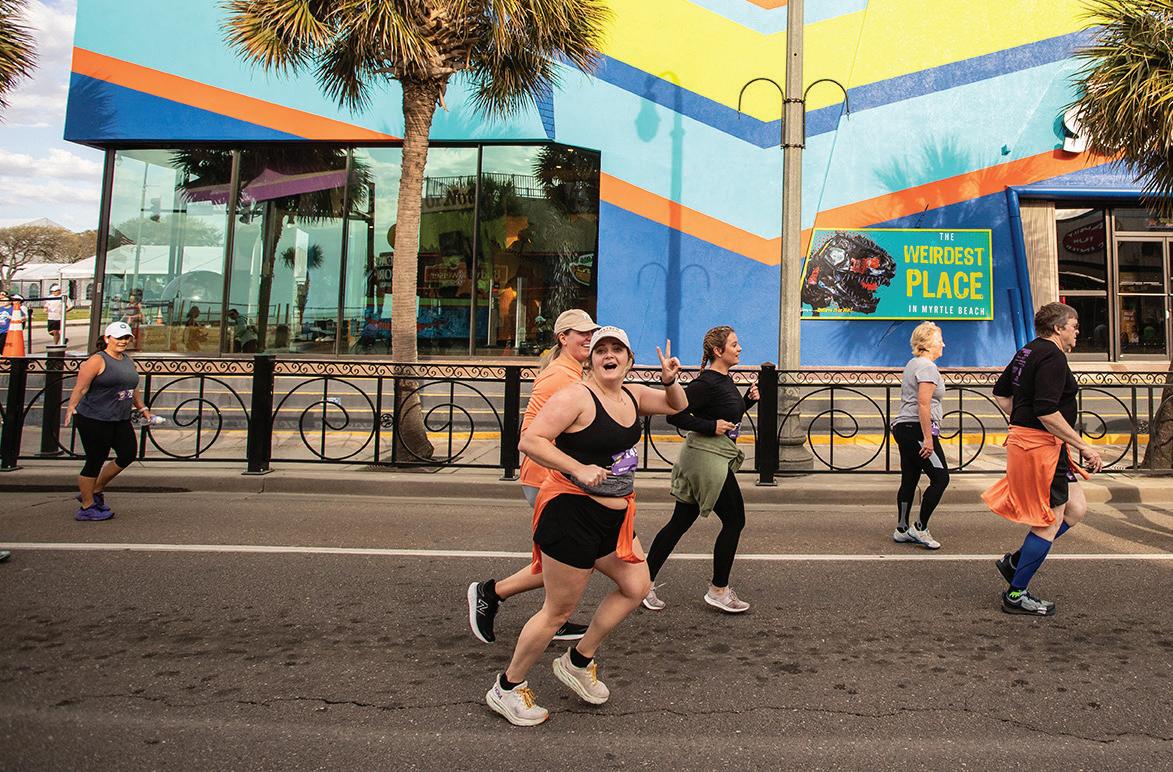
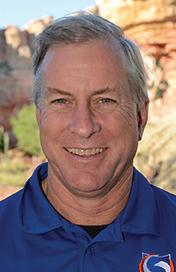
“A retailer must be willing to get involved in the database, email marketing or social media exposure. The days of just handing out postcards are over and totallyineffective.”
Mike Bone, Spectrum Sports Management
and the retailer helping to push signups.
Mercer: Integrating them into the points in the customer journey where they can add value and, therefore, receive value as well.
Do you have experience working with external race directors, either for your own event or partnering with an external event? What are the benefits of working with external race directors?
during and immediately after the pandemic. Race directors who think they somehow “own” their participants, “these are my runners, riders, triathletes,” are pretty myopic and not looking at the big picture. The truth is that the more good, solid, fun events are in the market, the more participants will sign up, start to run, ride or do a triathlon. Conversely, if the athlete has a bad experience, we may lose them and their family going forward.
We’ve built a year-round calendar of events – panel discussions, group runs, product demos – all through Fleet Feet and local run clubs. When you activate consistently, you deepen relationships and build long-term value for both the race and the retailer.
Bone: The retailer must be willing to get involved in the database, email marketing or social media exposure. The days of just handing out postcards are over and totally ineffective. A good partnership is the race driving traffic pre- and/or post-race
Dumontet: As Boulderthon continues to grow rapidly, earning its place as the number two fastest-growing races in the U.S., every element of our operations must scale and improve alongside it. Our first question was: Who can we partner with that has more experience than us, or with races even bigger than ours? In other words, who can move us closer to our goal of building a larger, worldclass race? To answer that, we’ve partnered with Brian Lyons (L27 Consulting) and Michelle La Sala and Kevin Pool (Blistering Pace) as our Operations Partners. They bring a wealth of experience from major races like Chicago, New York and others. The main benefit is gaining their expertise and best practices from other communities — learning what truly works at scale.
Bone: There is tremendous value in race directors working together. This can be a strategic tie, say a Challenge medal if you complete my race and the second race, or a soft association of promoting each other’s events. I strongly believe that we work in a “rising tide floats all boats” environment and we saw that
What would be your main business advice for anyone entering the endurance event industry?
Dumontet: We’re all working toward the same goal — growing and strengthening the running community. Big or small, every race faces similar challenges. It’s a small, supportive world, so share best practices, ask for help and collaborate. I highly recommend the Head Start podcast — it’s a great resource packed with industry insights.
Bone: Treat this as a business, not just a passion project. Work on a budget, surround yourself with good events staff that can support you in a crisis and create a great experience. Don’t be another fly-by-night pop-up run that has a short shelf life. Build a brand around your event with a great experience that will have people returning — and make sure it is at least breaking even the first year and then building into profitability.
Mercer: Running a small business is hard. Don’t ignore the fundamentals of business management. Also, most people in our industry are really passionate about what we do and are very generous with their time and willingness to give advice. So anyone making that leap

“Understand
the potential partner’s objectives clearly and thoroughly,then find ways to exceed expectations. Partnerships last if there is value being created for both parties.”
Charlie Mercer, Capstone Event Group
should also feel free to reach out to people for advice — you don’t need to figure everything out alone!” n
If you’re interested in learning more about these leaders, their businesses and the events they produce and/or work with, you can visit the Boulderthon website at www.boulderthon.com, the Brooksee website at www. brooksee.com, the Capstone Event Group website at www. capstoneraces.com, and the Spectrum Sports Management site at www.spectrumsports.net
Putting the ‘Fun’ In ‘Fun Run’
Mixing in food, art and pop culture, running stores tap into creativity to elevate the traditional fun run. / By
Danny Smith
At Athletic Annex in metro Indianapolis, Midweek Miles are a calendar staple, a regular opportunity for local runners to gather at one of the company’s three retail stores and knock out miles alongside fellow Hoosiers. Once in a while, though, Athletic Annex co-owner Gareth Wilford and his team like to jazz things up, even get a little wacky.
Like this past July 16, when Athletic Annex celebrated National Hot Dog Day at its Carmel, IN, store. The Glizzy Gallop (“glizzy” is Gen Z slang for a hot dog) featured a group run, demo shoes from Asics, hot dog costumes, an absurd amount of frankfurter-themed decorations, a pseudogas station weenie roller, a full hot dog bar with all the trimmings and red T-shirts emblazoned with the Glizzy Gallop name and an animated hot dog in a bun.
And if all of that wasn’t enough, Athletic Annex also scored a guest appearance from the globe’s most renowned gobbler of red hots: Indianapolis area resident Joey Chestnut.
“Having Joey here took things to another level,” says Wilford, who landed Chestnut as a distinguished guest after tagging him on social media posts and extending a direct invite via email.
About 130 participants showed up to the Wednesday evening event and many stayed until the store’s 8 p.m. close, Wilford reports. The event’s energy began much earlier, though, as Athletic Annex created urgency by promising the event’s first 100 registrants a free gift.
“If you think about your running store as a brand trying to reach a broader population, then events like the Glizzy Gallop are a bridge to the public, a gateway to connect with people who don’t identify as runners or are even intimidated by a running store,” Wilford says.
Athletic Annex isn’t alone in adding a
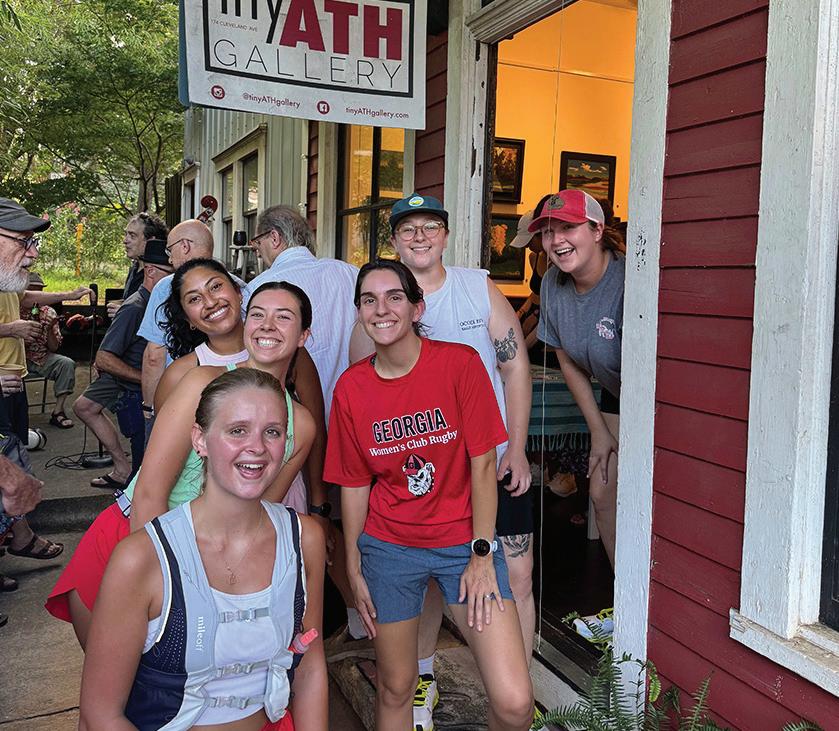
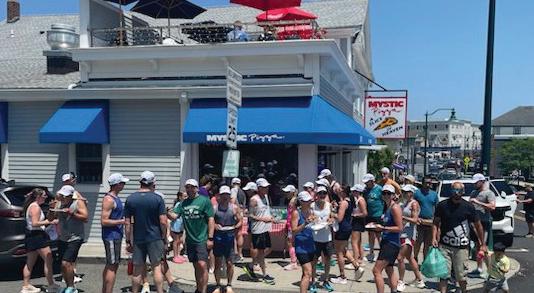
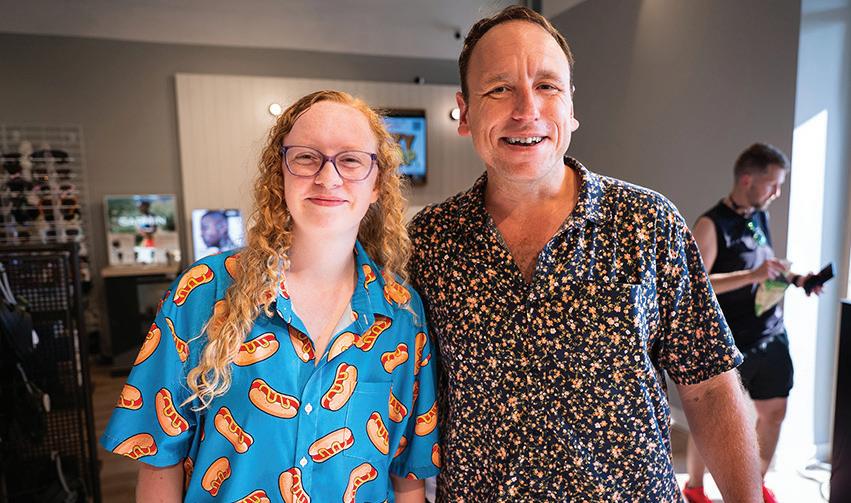
little (or a lot of) quirkiness to its typical group runs.
Fun Runs Are Fun
Across the country, run specialty shops host special events tapping into food, culture, history, pop culture and more to break through the noise, generate attention and foster connections with customers and their community.
• On March 14 over recent years, Fleet Feet Fort Wayne (IN) has hosted its Pi Run, pairing a 3.14-mile jaunt with Pi trivia, pizza pie and fruit pie.
• Down in Atlanta, West Stride has enjoyed its May the 4th Be with You: Star Wars Stride. The May 4 event features goodies like Star Wars Cake, Light Saber pretzel rods,
Ewokamole, Trooper Scoopers, Hans Rolos and Jedi Juice.
• Over in Rhode Island, Run Newport’s now-annual Prom Run sees runners donning old prom dresses, tuxedo tops and the like storm the town’s waterfront gazebo – albeit respectfully – as local teens pose for their pre-prom photos.
• On July 17, Fleet Feet Athens (GA) hosted its first-ever art crawl run/walk. About 100 participants visited five different local galleries to view different art mediums and meet the artists. At every studio, participants also received a playing card; the night’s best five-card poker hand then won a prize.
“Everybody was so excited to see these different galleries and run new streets,” says Catherine
Shinholser, the events guru at Fleet Feet Athens.
• Philadelphia Runner’s University City store similarly paired art and running together when it teamed up with Mural Miles to host a special five-mile run through the University City and West Philadelphia neighborhoods. About 140 runners trotted along, stopping to learn about six notable murals along the route.
• In Mystic, CT, Kelley’s Pace organized the inaugural Mystic Pizza Run on Sunday, June 22. The running store asked five local pizza shops to participate in the event, which sold out of its 64 slots in less than 48 hours.
Participants started at Kelley’s Pace, ran to each pizzeria, ate a slice and moved onto the next, totaling about five miles along
the route.
With the event’s $10 entry fee, Kelley’s Pace owner Jeff Anderson intended to pay for the pizza at each stop. However, every pizzeria ended up covering the pies themselves when they discovered Kelley’s Pace was donating all event proceeds to local causes. Anderson returned the favor by allowing each of the five pizzerias to pick one employee to visit the store for a personalized fitting and free pair of shoes.
“I don’t remember another event we’ve put on generating so much goodwill between businesses and the runners,” Anderson says. “What was to be a one-time event now looks like it will become an annual event for us.” n
Windy City Marathon Man
How Carey Pinkowski transformed the Chicago Marathon into a premier running event. / By
Danny Smith
Back in the late 1980s, the Chicago Marathon was anything but a stable, world-class event. Despite previous headline-grabbing performances from the likes of Steve Jones and Joan Benoit Samuelson, the event struggled to gain consistency and was, in fact, cancelled in 1987 after Beatrice Foods dropped out as lead sponsor. Though the marathon soon returned to Chicago’s streets, fewer than 5700 runners finished the race in 1989.
The Chicago Marathon was languishing, uninspiring.
Even still, Carey Pinkowski saw the potential. “I had a vision of where I thought it could go,” Pinkowski says.
Today, of course, the Bank of America Chicago Marathon is one of the globe’s premier marathons and a treasured civic event, touching 29 neighborhoods across the Windy City and viewed by some 1.7 million spectators.
One of the seven races in the Abbott World Marathon Majors series, Chicago has played host to multiple world records on both the men’s and women’s side and attracts runners from all 50 states and about 12 dozen countries. Nearly 170,000 runners applied to run the 2025 edition of the event on October 12, of which 54,000 were granted the opportunity.
And Pinkowski’s leadership and vision over the last 35 years has propelled this dynamic transformation.
Rescuing the Chicago Marathon
While a student at Villanova University, Pinkowski remembers taking the train from Philadelphia to New York City to watch the marathon. While many of his track buddies hustled to watch the elites finish, Pinkowski anchored himself to the course to watch the masses jog – or shuffle – by. He was fascinated by the everyday Joes
and Janes committing themselves to the daring, 26.2-mile endeavor.
After post-collegiate stints working in marketing and events for Adidas and at a Chicago communications firm, Pinkowski took the reins of the Chicago Marathon in 1990. He thought Chicago, a sports-loving town and an internationally renowned city with a metro population of 7.5 million, could inspire the masses much like Boston and New York City.
Enterprising, industrious and hands on, Pinkowski committed to building the Chicago Marathon one step at a time — or “block by block,” as he calls it. He cultivated relationships with the Chicago Area Runners Association, city officials, the Chicago Park District, the Chicago
Police Department, neighborhood groups and more.
“A lot of time out of the office meeting people,” Pinkowski recalls of his earliest years as race director. “The pieces were all there, just not the connection.”
Slowly, Pinkowski began weaving things together throughout the 1990s. He built a capable team at Chicago Event Management (CEM), the marathon’s production company, and designed the 26.2-mile course. He scored corporate sponsorships, including a title sponsorship from LaSalle Bank. While recruiting elite athletes and promising stars, he focused on the average runner and making the race-day experience special and seamless. Chicago was an open event without time standards for registration and
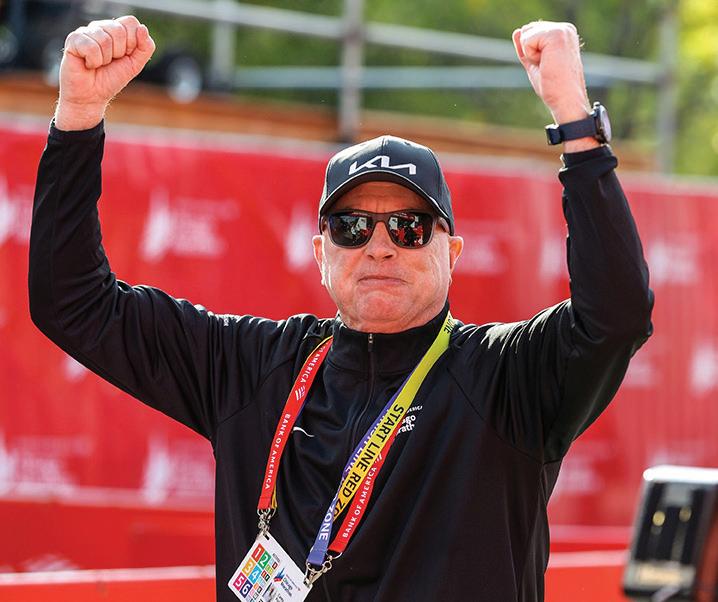
Nothing You Don’t. Everything You Need.

Introducing the Zoe Pro
Scanner. Engineered to Bring the Future of Shoe Fitting to Everyone.
Where Precision Meets Simplicity. Inspired by the way Tesla made game changing technology widely accessible with the launch of Models 3 & Y, we set out to reengineer foot scanning from the inside out. Our mission: eliminate cost and complexity without compromising performance.
In just eighteen months, our engineers successfully removed 260 internal components, fully optimizing
system architecture. Simultaneously, we advanced our sensor and camera technologies to deliver higher precision in a simplified user presentation.
The final result: the Zoe Pro. A breakthrough in thoughtful engineering, delivering world-class performance at a price that finally makes advanced 3D scanning widely accessible.
This is the future of shoe fitting. And it fits everyone.
Starting at $1,995 or $55/month

Scan QR code for technical specifications
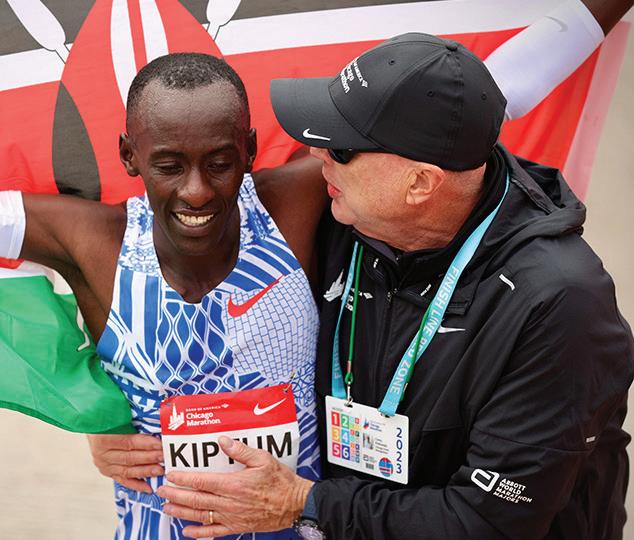
its common start/finish area in centrally located Grant Park eased logistical concerns for runners.
Along the way, running as a fitness activity accelerated. Marathons, once derided as human folly, became mainstream. Oprah, one of Chicago’s most famous residents, discussed training for a marathon on her national TV show and encouraged her flock to follow. Female participation, once in the single digits, soared.
“If I can do it, anyone can do it,” Oprah declared.
And sure enough, the Chicago Marathon numbers climbed. After years of hovering around
6000 finishers, Chicago crossed 14,000 in 1997, 17,000 in 1998 and 24,000 in 1999, the same year Khalid Khannouchi set a new world record time of 2:05:42 in Chicago.
Led by Pinkowski’s persistence, Chicago was no longer an also-ran.
Racing for Improvement
Throughout the 21st century, Pinkowski has continued to steward the Chicago Marathon and solidify its standing as a prominent world marathon.
He acknowledges fortune has smiled upon him and the industry at large. In addition to marathons becoming a social
phenomenon, the journey to the finish line has become far more enjoyable for participants given innovations in footwear and apparel, instant access to training information and welcoming running groups.
Yet more, many major races benefit from charity tie-ins, which bring added purpose to events and fortify participants’ efforts. At Chicago this October, Pinkowski says 20,000 charity runners will aim to top the $37 million that charity runners raised at last year’s event.
But Pinkowski refuses to take anything for granted, pushing his team toward ongoing improvement. After
the marathon every October, Pinkowski and his CEM team conduct a post-race autopsy. They reflect on what worked and didn’t, tackle criticism head on and discuss potential enhancements.
After race officials halted the 2007 race amid scorching heat, for instance, a decision that frustrated many participants, Pinkowski’s team instituted an on-course alert system of green, yellow, red and black flags alongside other backup safety measures like having semitrucks packed with excess water at the ready. Many of CEM’s practices are now standard at other large events. From runner tracking and safety measures to additional on-course medical support and operating each of the marathon’s 21 water stations the same way, Pinkowski’s team is constantly hunting improvements while delivering on event essentials like an accurate course, intuitive packet pickup and clear communications on where participants need to be and when.
“We’re always trying to get just a little bit better,” Pinkowski says.
In addition to reflecting on successes and struggles at the Chicago Marathon, Pinkowski is quick to connect with industry peers and travels to other races to study operations and processes. Early on, he relished opportunities to connect with New York City Marathon cofounder Fred Lebow, whose time and insights helped Pinkowski sharpen Chicago’s race.
“Experience and knowledge are valuable, so when someone is willing to share it, you pull up a chair and listen,” Pinkowski says. “After all, better running events are good for all of us.” n
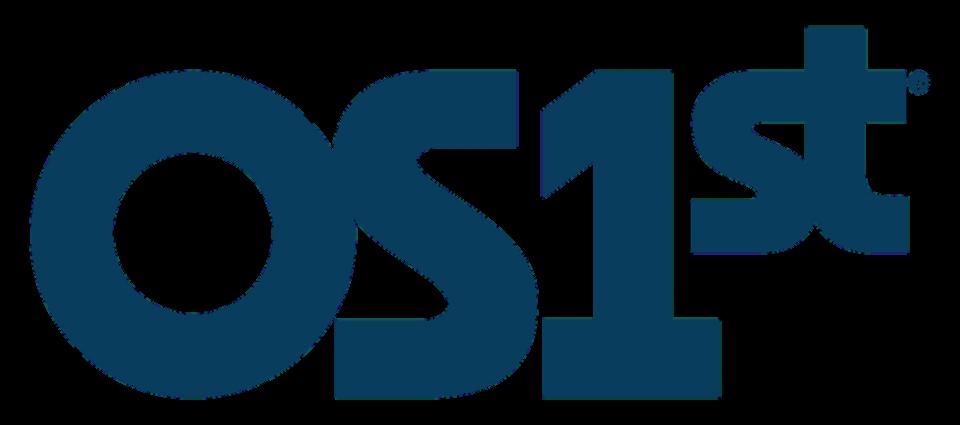

We Interviewed Three Run Specialty Stores
They told us how they drove incremental revenue growth with intentional sock sales (not discounting).
We understand that your business faces competing priorities. So, we’ve compiled valuable insights to grow your sock business, based on the tried and true methods of your peers.
Scan here to get the case study!
The Racing Issue
Serve Yourself
A recent study confirms the efficacy of refillable cup systems for races — both for efficiency and sustainability.
Imagine the scene: It’s race day and volunteers are scrambling to fill paper cups as racers come in, desperately trying not to bump into the table and knock all the cups down. Runners are bottlenecked at crowded aid stations and a sea of paper cups litter the ground, leaving everyone to run through the waste.
This is a common occurrence at races around the world and race directors have struggled to figure out how to manage these issues. There may be an answer, and there is data to support it.
Recently, a study commissioned by hydration brand HydraPak and led by crowd scientist Marcel Altenburg, whose expertise in mass movement dynamics guides some of the world’s largest endurance events, found that races that adopt refillable, self-serve hydration systems not only reduce waste and labor significantly, but also keep runners moving without delays.
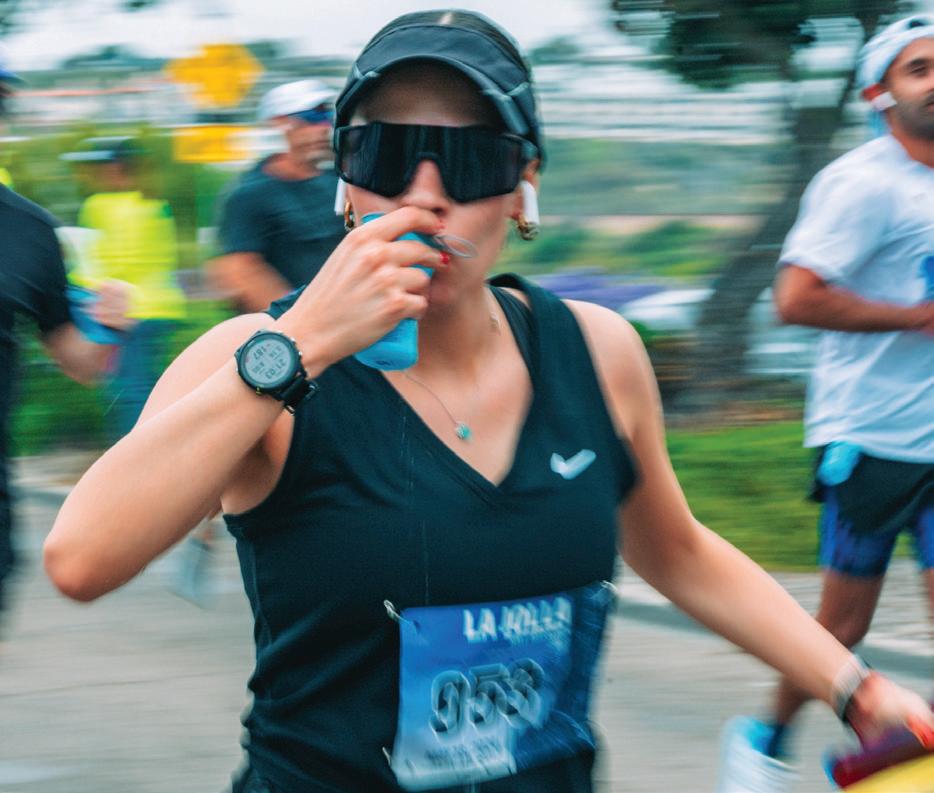
volunteer needs by two people, cutting staffing in half at busy stations.
• The modeled system at La Jolla could handle up to 250 runners per minute, though it ran far below that threshold, keeping everything smooth and showing the potential for a larger capacity.
solve 90 percent of aid station problems, from staffing to runners waiting for a cup of water. If you have enough Ultraspouts, racers will never have to wait again and your race can grow without the need for more volunteers.”
Since 2021, endurance events have seen steadily rising participant numbers with fewer volunteers offering their time to support events, despite the crucial role they serve in race operations. To alleviate the impact of this growth, self-serve models are proving to be a scalable solution and allow races to utilize volunteers more efficiently.
Using Start Right, a simulation tool trusted by the World Marathon Majors, Altenburg mapped real-time movement with 99.9 percent accuracy. Altenburg’s research analyzed aid station efficiency and racer flow at the 2024 and 2025 La Jolla Half Marathons. These races both implemented a refillable racing model using HydraPak’s Speedcups and Speedfill Pitchers, large-scale WaterMonster tanks outfitted with UltraSpout dispensers and runner’s own refillable hydration vessels.
His conclusion: The refillable model is not only viable — it is superior.
• 4.2 spigots per 100 runners per minute ensures smooth, stressfree flow with a 150 percent safety margin.
• A single spigot can reduce
• Self-serve hydration eliminates the number one pain point at aid stations: long lines for a cup of water.
“If you can estimate your total racers, you can easily plan cupless aid stations — and now we have the numbers to prove it,” states Altenburg. “Through sustainable racing, you
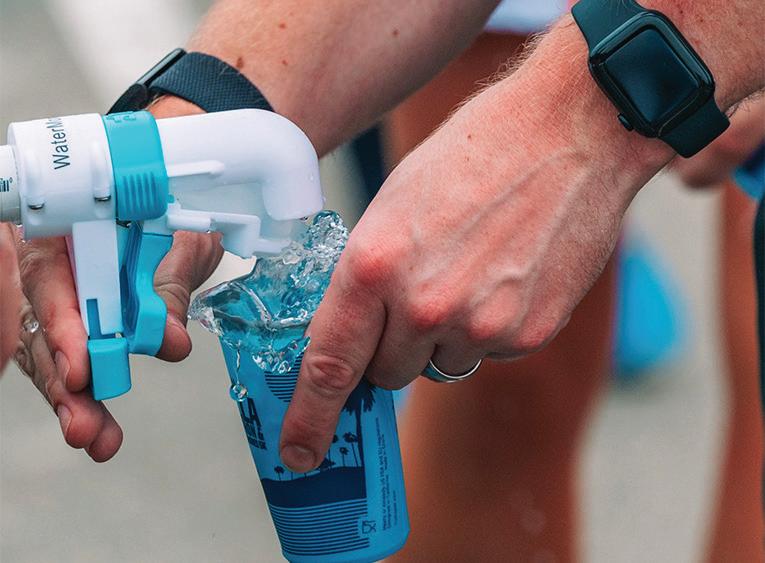
Major events, like the New York Marathon or Chicago Marathon, rely on armies of volunteers to unpack, pour and distribute tens of thousands of single-use cups per station. With a standard cupless racing setup with refill stations, like that at the La Jolla Half Marathon, volunteers can be reassigned to other important tasks. Despite clear environmental and operational benefits, the most significant barrier to eliminating single-use cups remains tradition and a resistance to change.
“I understand the hesitation other race directors have, but this model made our event even easier to manage,” says Burt Calame, race director of the La Jolla Half Marathon. “We had a simple setup, needed fewer volunteers, saw less waste and had an overall better experience for runners. On race day, the aid station flow was nothing short of excellent. Our race won’t be going back to the traditional model.”
Altenburg’s study offers race directors a data-backed blueprint for streamlining aid stations while drastically cutting waste With this new data in hand, race directors can confidently move away from singleuse systems and toward a more efficient and sustainable future. n
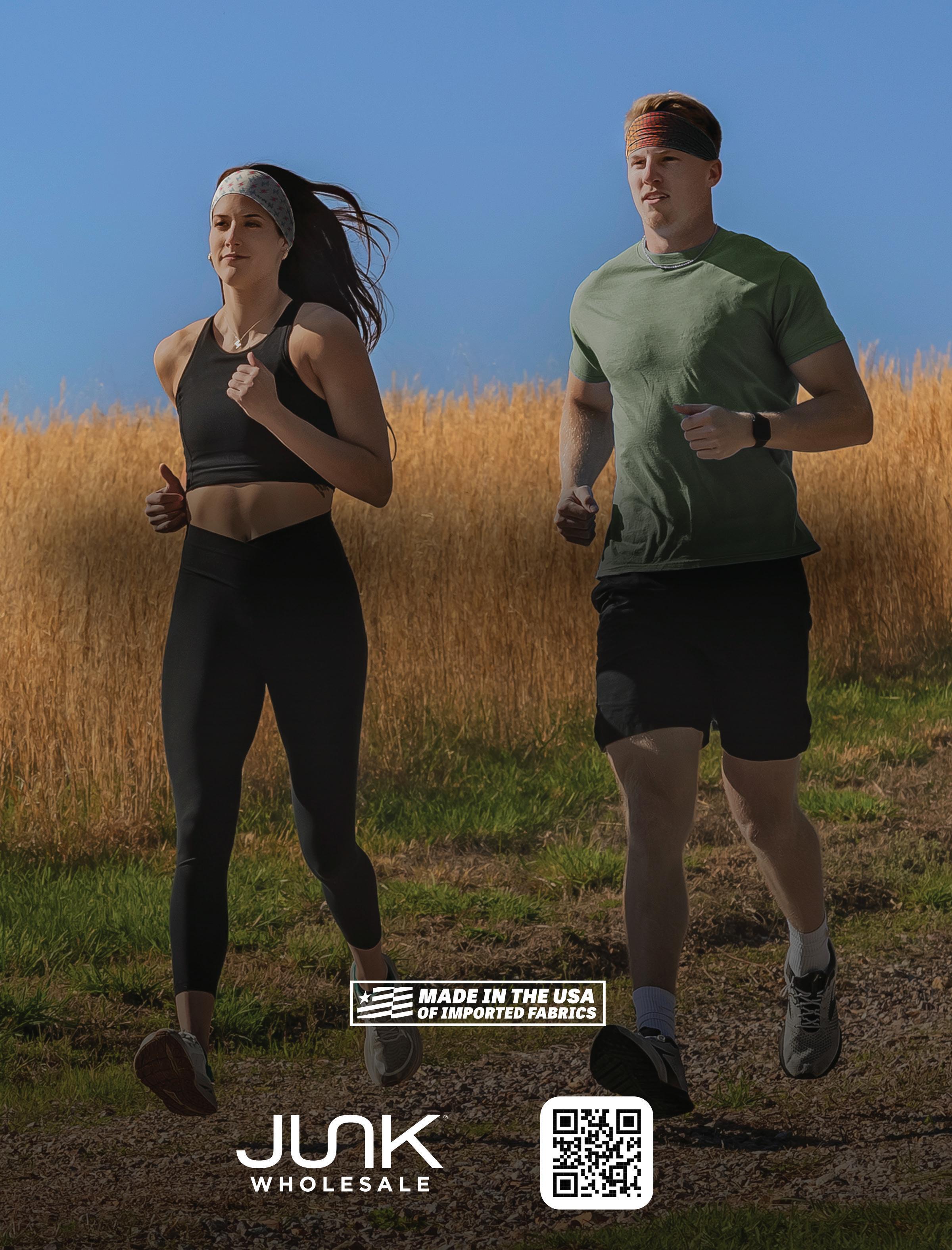


Run Heather, Run
Big Peach Running’s Heather Trainor has run more than 150 marathons. We wanted to find out how … and why.
Heather Trainor’s title at Big Peach Running Company is “Maker of Friends/Purveyor of Fun/ Director of Medical Outreach.” You can add the title of Marathon Woman because she recently finished her 150th marathon, a remarkable achievement for a women who is a key member of the Big Peach team. We found it so remarkable, in fact, that Running Insight reached out to her as she traveled to Australia for the Sydney Marathon to find out how and, most importantly, why she keeps on running … and running
So here in the words of our October issue cover girl, is Heather Trainor’s inspirational story (edited for brevity since Heather loves to talk about running.”
Her family. I have three kids, two grandkids and one husband — and two dogs, but they got demoted now that I have grandkids.
Getting started in retail. My friend worked at a small running store near our house and convinced me that I would like it. I knew what shoes I liked to run in (and didn’t), but gave very little thought to what other people wore, their gait or anything like that. Now I’m obsessed.
Enter Big Peach. I started with Big Peach Running Co in 2018. I initially came to BPRC to run their Amazon program, but I missed working in the store and helping guests, so I started picking up shifts. My first position of responsibility was birthday captain — that’s a made-up title I gave myself, but I thought it was important to recognize our co-workers on their birthday (it has since morphed into holiday party planner, baby shower
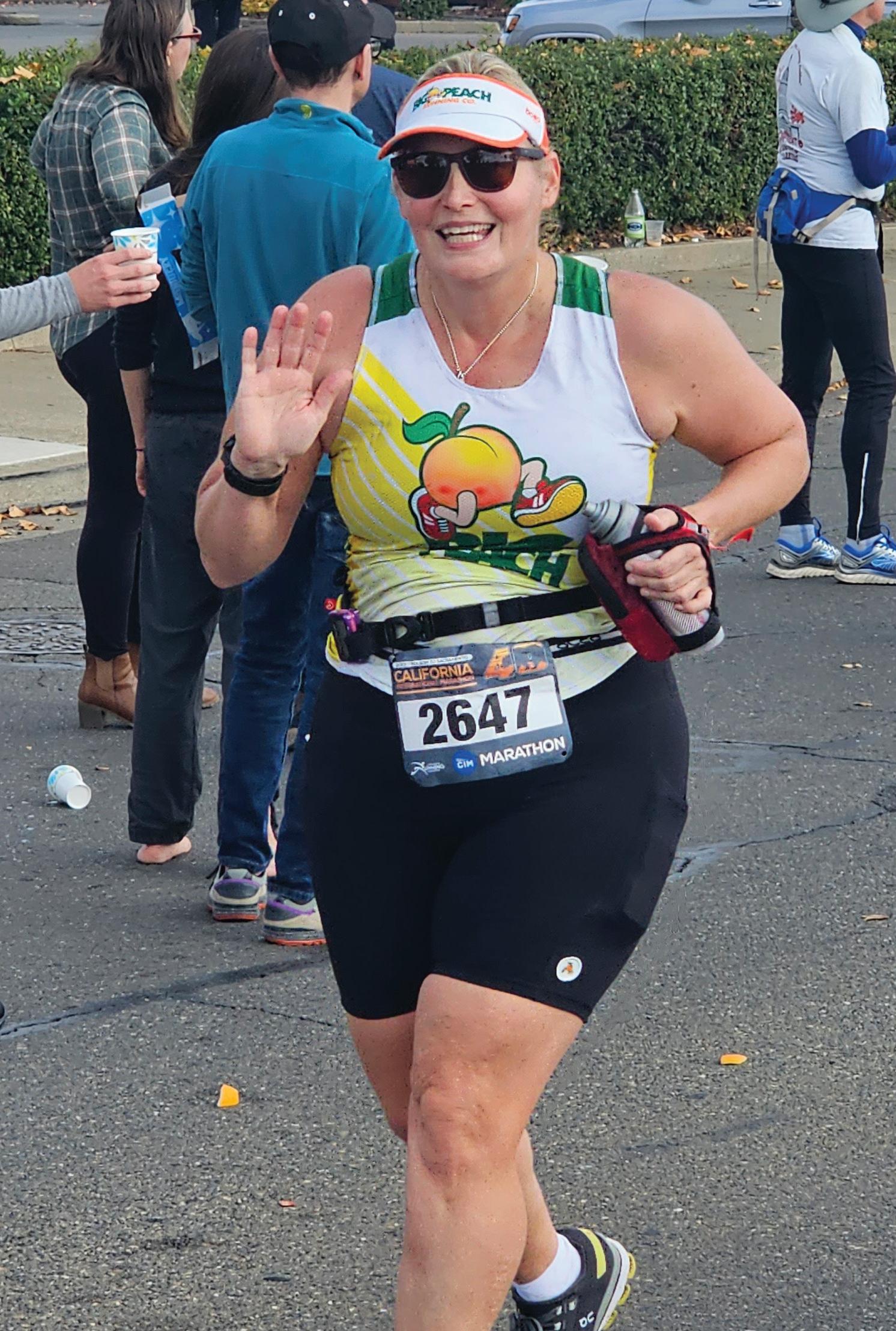
thrower and all-around every occasion person).
Promotion Time. My next upgrade was when I talked Steve DeMoss into letting me take over the medical outreach for the store. I basically asked him every month or so until he finally relented. Next I starting working on in-store special events. All of these combined with my love of going to all of our local races to set up a tent and chat with runners lead to my current job title of “Maker of Friends, Purveyor of Fun.”
Did you start out with a goal of 150 in mind or did it just happen over time?
Growing up I was somewhat of a runner — my family did the Peachtree Road Race every year on the 4th of July (this year will be my 40th) and we ran other local races on the weekend when I didn’t have soccer, basketball or track. I remember my fifth grade teacher being really impressed that I had run a 10K the weekend before and I thought she was strange because, well, didn’t everyone run races on Saturday mornings?
I kept getting mail from the Leukemia and Lymphoma Society for their Team in Training, but I was busy graduating, getting married and having three kids so I talked myself out of each one that came. Then one day I got a letter from a college friend and she was doing a marathon with TNT. I called her right away and said how I had been considering doing a marathon with them for
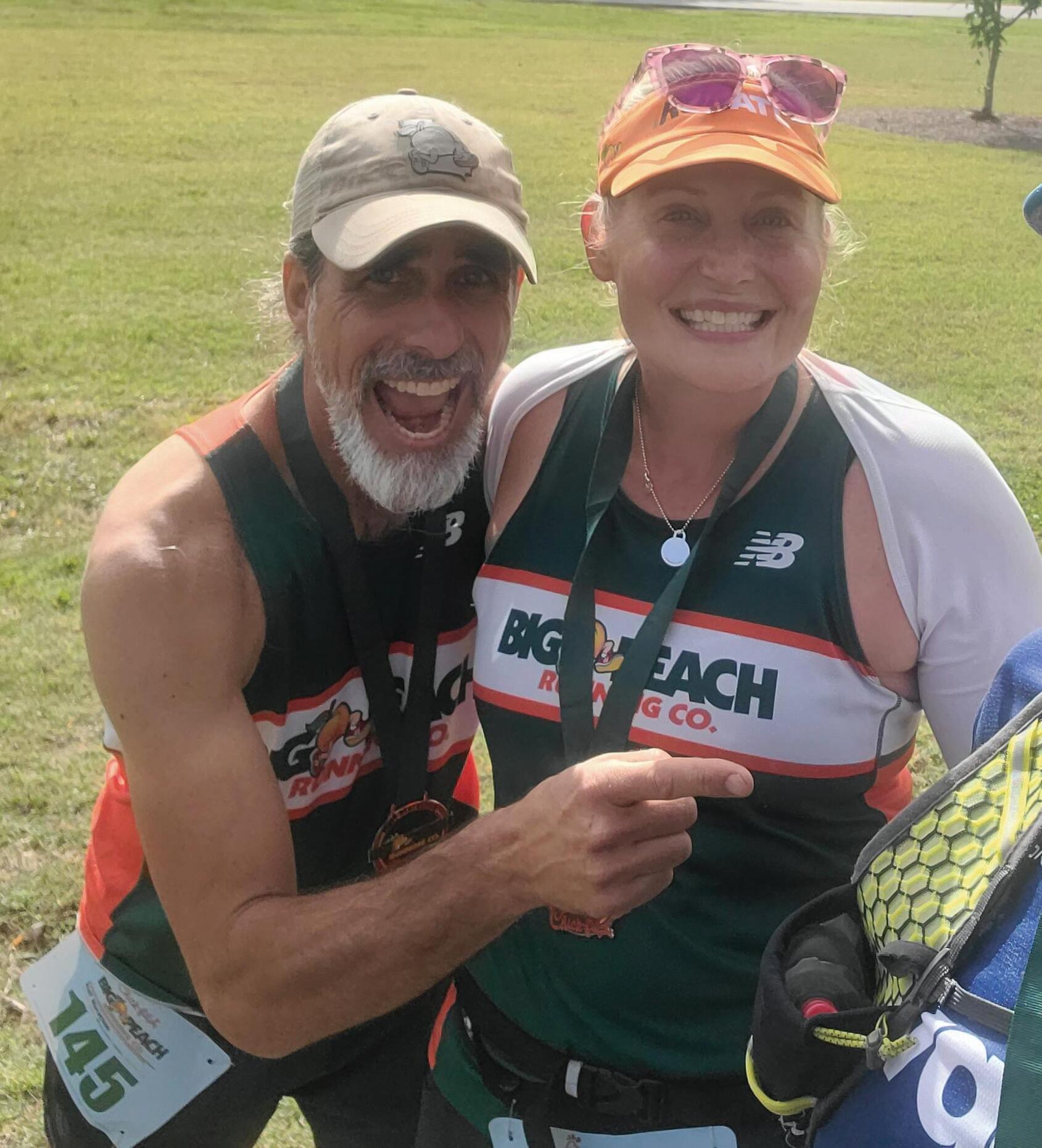
years. So we signed up for the inaugural Phoenix Rock and Roll Marathon in January of 2004.
What kept you going?
Training for my first marathon was hard (but fun) so I didn’t want to lose my long run fitness so I signed up for my second marathon before I had even done the first. I had no goals or anything, I
just thought make sure you don’t lose this mileage base. But every race I finished, I thought I could maybe do something a bit better, or try a different nutrition strategy, or a friend called and wanted someone to run with them, so I kept signing up. I was probably 8-10 marathons in before I had even heard of running a marathon in all 50 states, but I didn’t really even
think I would ever get that organized. I just liked finding a race and running it.
150? Why and how?
The goal of 150 didn’t come along until way further. I thought I was a bit closer that I actually was to 150 (my husband keeps the spreadsheet of my races and times, I just run). I thought it would be cool to run 150
marathons before I turned 50. I said this out loud at the Rio Marathon after party a few days before I turned 49. I wrongly estimated I was at about 135 marathons. I typically run 12 marathons a year or roughly one a month. So I thought 15 in the next 12 months wouldn’t be so bad. But I was only at 122 marathons, so I tried running them bi-weekly and sometimes two a weekend to get to 150 and promptly got injured. So I got slightly smarter and adjusted the goal to 150 while I was still 50 (so before I turned 51).
Does all of this running and training help out with your job at Big Peach?
Physically it does in the fact that I am used to long hours on my feet and don’t mind standing for long periods. But also because I love getting to talk to people as
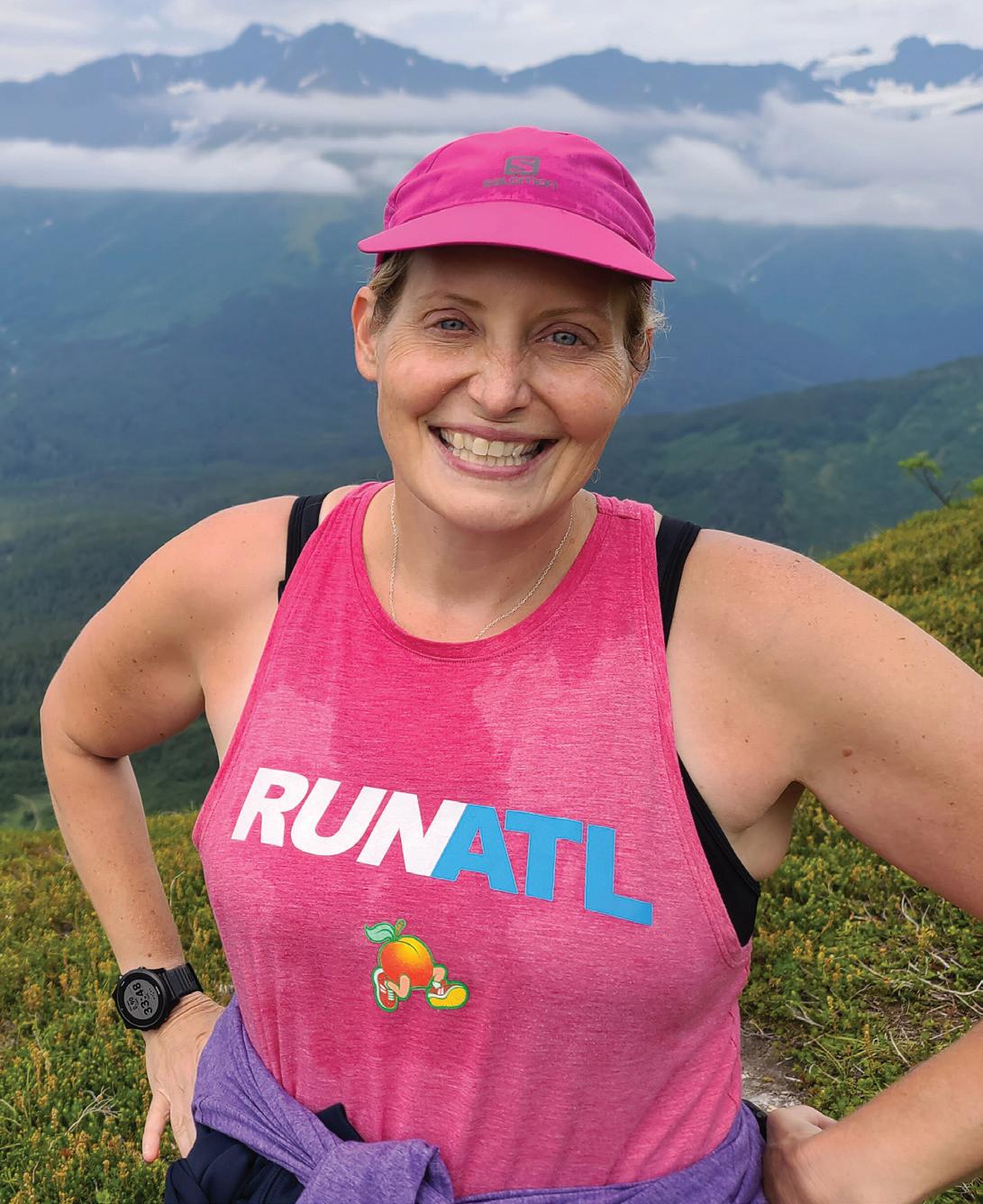
PR: San Diego Rock and Roll, 4:58
First marathon: Inaugural Phoenix Rock and Roll marathon January, 2004
150th marathon: Hatfield and McCoy Marathon, June 2025, South Williamson, KY
Most recent marathon: Sydney, Australia. I was excited to get the seventh star, even though you only get a medal at six and nine. I just go home and throw the medals in a Rubbermaid bin, so I’m not sure why they are so motivating to me.
Next marathon: Marine Corps followed by the Kaveri Trail in India
Hardest marathon: Probably Pikes Peak. I’m not that good at trails or altitude, but I had a year where I decided to run all the hardest marathons in the U.S. It was a long year.
Favorite marathon: Hard question. I love NYC, I’ve done it a bunch of times. If anyone says they only want to run one race and have a top cheering experience, you can’t compare to the crowds of NYC. And getting to see all the boroughs on foot is amazing — every time. But NYC is
they are starting on their running journeys, or running their first race or honestly just anyone who comes in to talk about running or shoes or anything like that. My friends and family are over hearing it from me! If anyone comes in the store saying they are training for a race, I’m always popping over saying, “Oooh what race?”
Do your customers know about all of your marathons? Can they relate?
I try to not mention my level of running to anyone because I don’t want them to feel intimidated or that their training for a 5K is somehow a lesser goal. My coworkers rat me out a lot when I am just trying to be under the radar. I have made a lot of friends that come in the store and we start talking about races and then I decide to
expensive and hard to get into and the getting to the start and waiting is a pain.
Other favorite marathon: My favorite marathon for me is the Flying Monkey Marathon in Percy Warner Park outside of Nashville. It’s a beautiful race and a tough course. Lots of friends always do it and you end in a field with beer and food trucks and just hang out and talk. The race director, Trent, has a day job as a professor at Vanderbilt, but he’s also a genius at race planning. The signs he makes, the views on the course can’t be beat. Favorite running shoes: I kind of have a problem. I love running shoes. Thank goodness for in-store discounts and seed shoes. I tend to run in several shoes at a time depending on how I feel and what I’m thinking. I probably have owned more original On Cloudsurfers than anyone on the planet. But I also have run through lots of super comp trainers, Rides, Wave Riders, Cliftons, Ghosts. I just need a semi-stable neutral shoe.
Favorite running clothes: RunATL visors and shirts.
Running playlist: I find music distracting. I just run. Sometimes I meet people and talk to them. Sometimes I’m by myself and end up talking to trees or cows or just planning our next store event in my head. If I resort to music or audio books, it’s not a good day.

Runs Ahead of the Industry Be the Store That

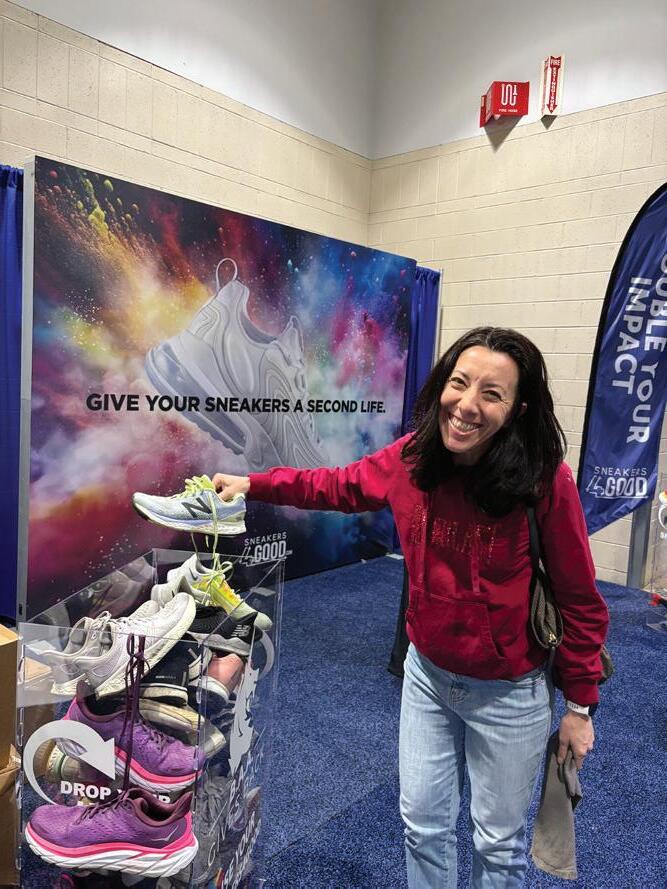
Support your community
Whether you're a single location or a national retailer, this is the easiest way to do good with used running shoes. Our Sneakers4Good collection boxes and prepaid shipping bags empower you to:
Fund local events, races, and causes
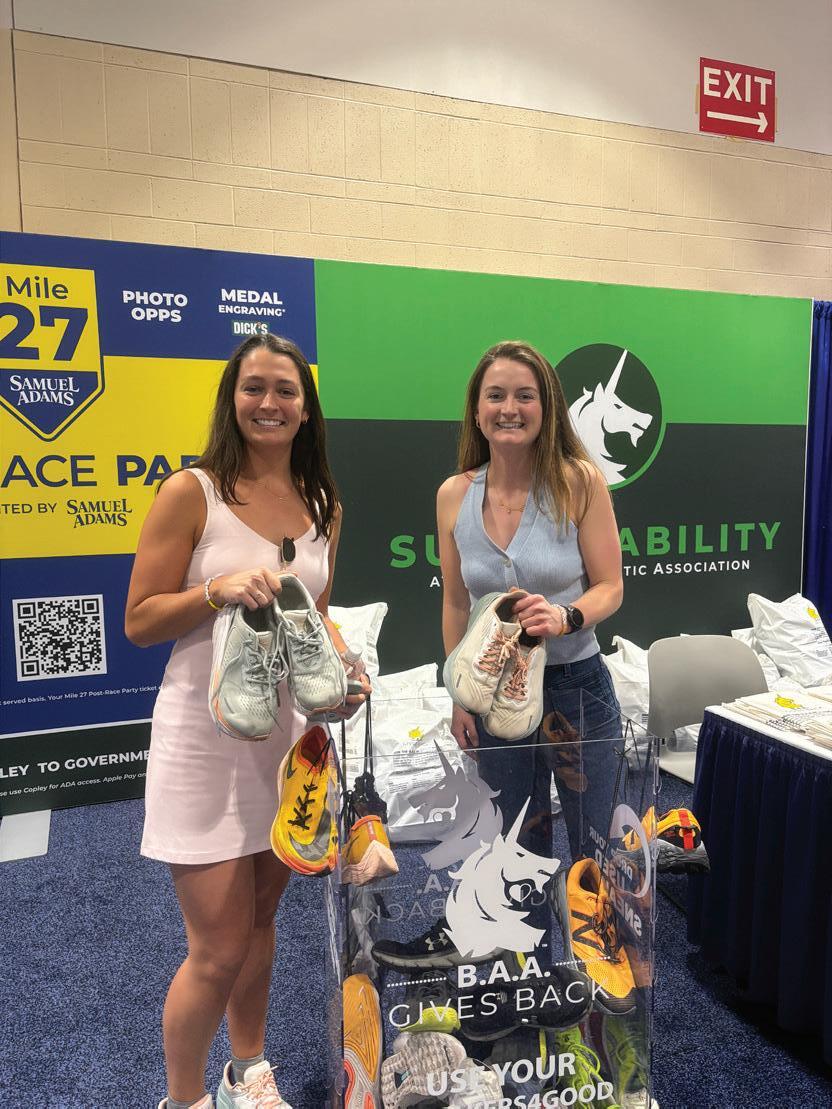
Show o your sustainability commitment
Give sneakers a second life all over the world
We provide everything from branded bins to custom marketing and impact statistics. You collect the sneakers, we'll handle the rest!
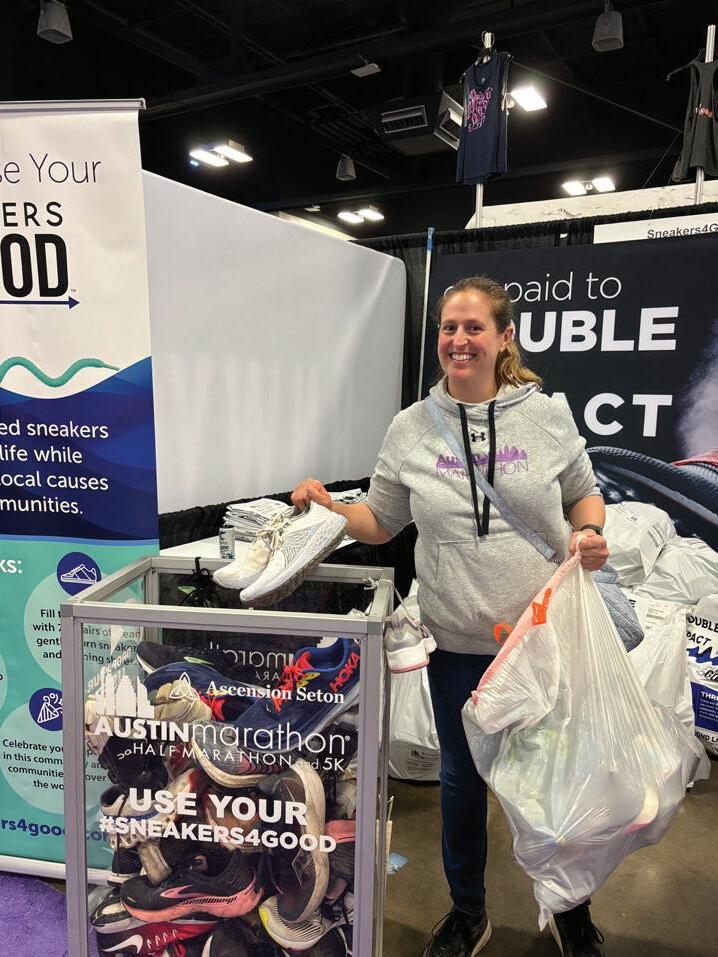
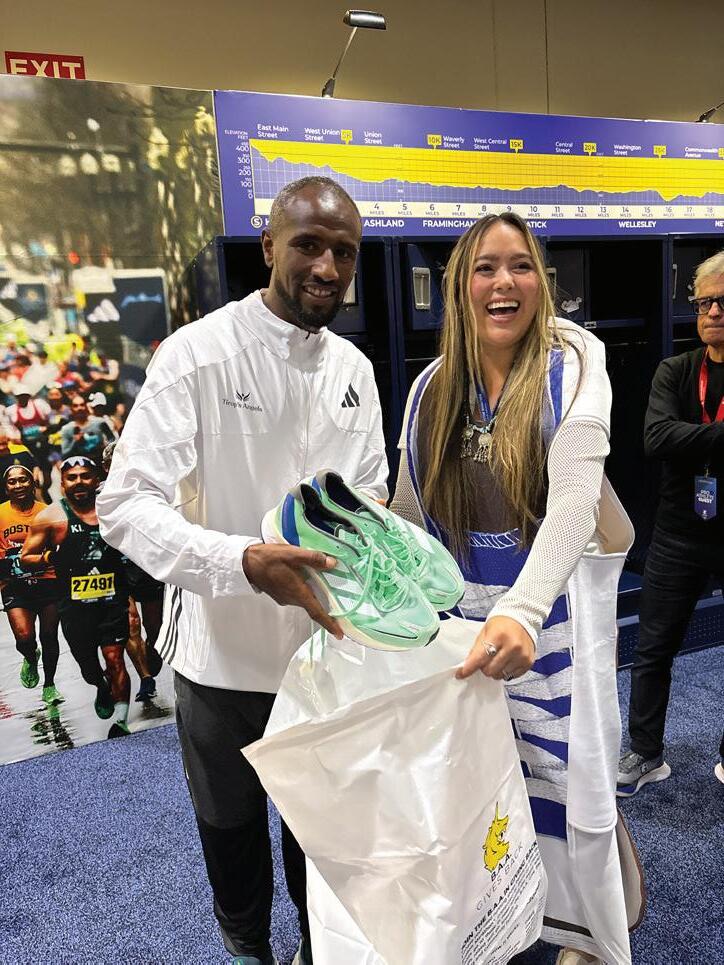
Get paid to double your impact at
(407) 440-1244 | hello@sneakers4good.com
Run Heather, Run (continued)
TRE2025 Education Spotlight
THE DOCTOR SENT ME: HOW TO BECOME THE TRUSTED
RETAIL PARTNER FOR RUNNERS
Speakers: Heather Trainor, Big Peach Running Co.; Kate Edwards, Precision Performance Running Medicine Clinic / RUNsource
This session explores how running-specialty retailers and medical providers can build meaningful, lasting partnerships that drive business and improve runner outcomes. You’ll hear firsthand from a Doctor of Physical Therapy specializing in running medicine and a specialty running store manager on what makes a referralworthy relationship work and what doesn’t. Whether you’re starting from scratch or want to deepen your existing outreach, you’ll walk away with actionable strategies to turn medical trust into measurable impact.
run the race with them. And I never mind telling people what I thought of a course or tips and tricks from any marathon I’ve run. But I still try to remain incognito.
Do you think you are perhaps an inspiration to them?
I do really and truly think that anyone can run a marathon if they are willing to put in the time and miles. I don’t know if I’m inspiring, but I think it’s important for people to know that everyday people can run long distances and it’s not just a sport for college runners or track athletes.
What is your training routine for your marathons and how do you fit it all in?
I really like to be busy, so that helps. It is also helpful that our stores don’t open until 10, which is like midday for me. It’s much harder for me to do a closing shift (until 8 p.m.) because I like to go to bed. I usually run and then do a tennis drill or vice versa in the a.m. Tuesdays, Saturdays and Sundays are usually tennis-free and I do the longer runs and hardest
workouts then. Also as long as I run a marathon or two a month, I never really need to do a 20 miler, just maintenance/bridge miles.
Do (Big Peach owner) Mike Cosentino or Steve DeMoss or other Big Peach people ever run with you?
Mike and I ran some miles in the inaugural Running Man race. One mile loops are a fun way to get a marathon in because you get to see everyone and really interact with everyone. Steve and I have run several 5Ks together (well kind of — he says he’s slow and then takes off). New Balance sent a big group of Big Peach employees to the NYC marathon in 2023 and that was super fun to have that experience as a group.
How would you describe your running style?
Relaxed? I don’t have a goal most races. I have slowed down to help someone who’s struggling or run with friends at their pace lots of times. I will always be willing to help out newbies or people having a bad day. That’s really my
favorite part of the running community.
Do you have a count on other, shorter races you have run?
I have finished eight Ironman races. I have no idea on half marathons, 10Ks, 5Ks or shorter triathlons.
Any ultras planned?
I’ve done a 50K and a few ultras here and there. I wish that I loved trail running more because so many of my friends have turned to trails, but I tend to get lost and I hate snakes so I am destined to be a mostly road runner. I have batted around the idea of a 100 miler for a few years, but I think I would have to actually concentrate and play a lot less tennis.
What would be your message to anyone reading this who might be considering their first, second, 50th or 150th marathon?
If you are willing to commit the time, tears and miles to it, you can do it. There’s not really a secret formula other than determination and knowing you won’t quit.
What’s the schedule for 2026?
Other than world majors and marathons that require travel visas, I don’t plan ahead too far. I want to make sure that the store is covered before I take off. I sometimes don’t sign up until the week of the race. Sometimes the day before. I end up emailing a lot of race directors after online registration has closed. But I’ve also become friends with lots of race directors that way too. I do bring Run ATL shirts as a thank you if they squeeze me in.
Any you do have scheduled?
The only two races set somewhat in stone for 2026 is the Great Wall of China Marathon and Daufuskie Island, SC. I keep hearing rumors that the Great Wall marathon won’t be going too many more years because of the degradation of the wall, so I wanted to make sure I got that one in. Daufuskie has become a fun one I try to do every year if my schedule lines up. It’s such a quirky island and a fun race.
What does your family say about all of your running?
We have a double jogging stroller and we try to be active with our grandkids. We have pushed them in 5Ks. Our almost three-year-old granddaughter already loves running so I am hoping we can do a shorter race with her running too.
Do we do this story again after your 200th marathon?
Hahaha. No. I have a feeling this is already going to ruin my incognito status. n
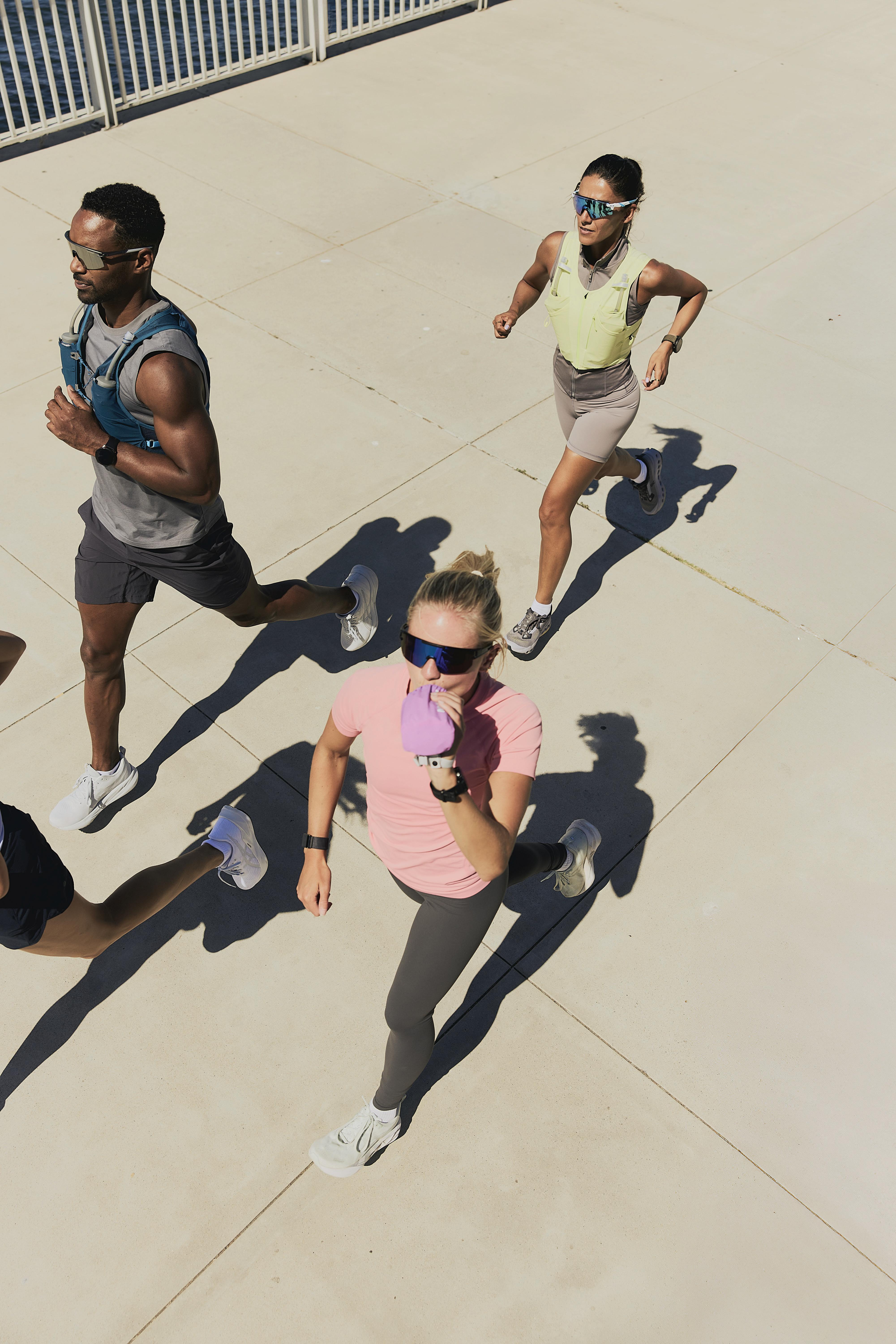
Selling the Triathlon Dream The Racing Issue
How run retailers can guide the transition from running to triathlons. / By
Hilary JM Topper, MPA
Istarted running at age 48. I had never been a runner before that. For years, I enjoyed running at least three days a week and racing maybe a dozen times a year.
Then at the Brooklyn Half Marathon, my life changed. My friend and I decided to try a triathlon for the first time. She no longer wanted to compete in running races. Like many runners who have completed half marathons and full marathons, I was looking for a new challenge.
Looking for a new challenge is why many runners try out a triathlon. And that is why it might be wise for run specialty retailers to diversify their offerings for this new type of athlete. Run retailers are uniquely positioned to be an essential resource for their journey — at the same time, building loyalty and creating new revenue streams for a dedicated, passionate – sometimes crazy – triathlon consumer.
To effectively serve this demographic, retailers first need to understand what motivates them. Runners are typically disciplined, goaloriented and accustomed to structured training. However, transitioning into triathlons introduces new factors and potential challenges.
Runners are drawn to triathlons for several reasons: the thrill of a new physical and mental challenge, the benefit of cross-training to reduce the risk of running injuries and the vibrant, supportive community that
promotes the sport.
In my upcoming book, “Unlocking the Triathlon: A Beginner’s Guide to Competing in a Triathlon” (Meyer & Meyer Sports, November 2025), I examine this transition from runner to triathlete. I also spoke with a professional triathlete who shared her experience with the Olympic trials for running, where she encountered frequent injuries. By switching from running events to a triathlon, she eliminated those injuries and was able to run more effectively. There is a strong overlap between the running and triathlon communities. Many
triathletes are “runners who learned to swim and bike,” since running is one of the most accessible endurance sports. I was one of them.
While most runners have their running leg covered, the swim and bike sections can feel intimidating. They often have questions about everything from swimming techniques and open-water nerves to cycling efficiency and complex gear.
Your role as a retailer is to educate and guide. You can clarify the process by recognizing their running expertise while offering a clear, supportive path into the other two disciplines.
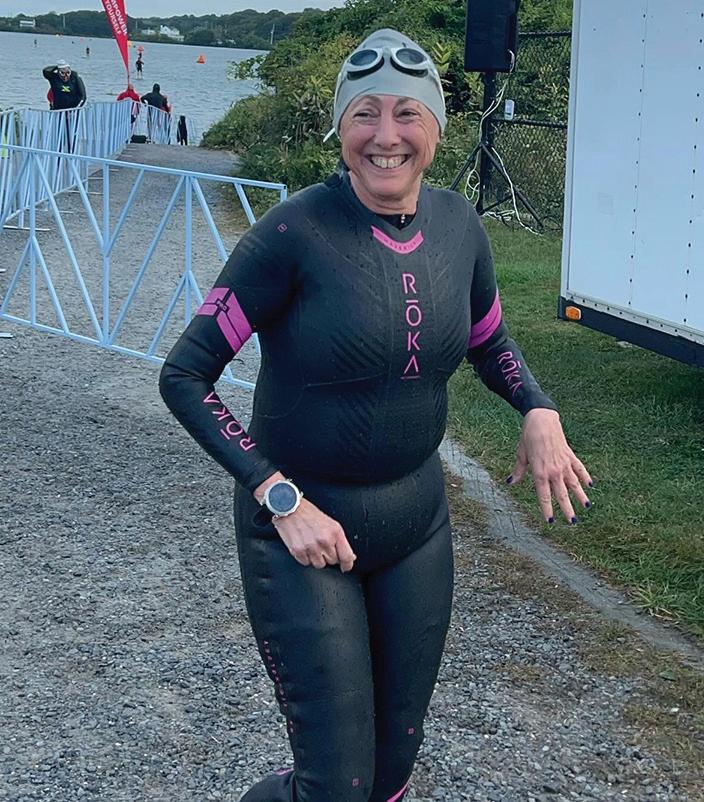
Empathy is key. By understanding their concerns and providing practical solutions, you foster the trust needed to become their reliable resource. Here are some steps to take to be that resource.
1. Building the Right Product Mix
A runner’s gear closet looks quite different from a triathlete’s closet. Guiding this transition involves stocking the right products and, more importantly, being able to explain the “why” behind each item. Your inventory should be a carefully chosen collection that meets the specific needs of a beginner triathlete.
2. Footwear: More Than Just Running Shoes
While they already have their favorite running shoes, new triathletes will need cyclingspecific footwear. Explain the benefits of cycling cleats and clipless pedals for better power transfer and efficiency.
The POS with wholesale built right in
Move faster, buy smarter and sell better. Lightspeed brings your POS, inventory and wholesale together in
Give your business a competitive edge with:
Smarter buying by forecasting demand, discovering top brands and placing orders right from your POS
Streamlined operations simplify purchasing and inventory across all locations
Better customer experiences shelves stocked with in-demand products
Ready to hit your stride?
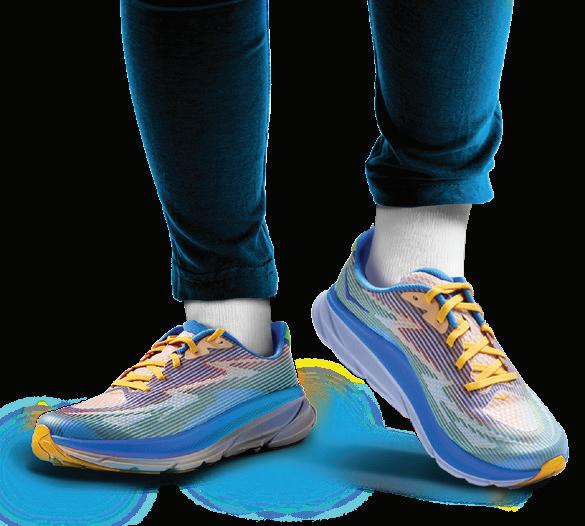
Join us at The Running Event in San Antonio, December at booth #8053, and see how Lightspeed helps retailers keep the pace.
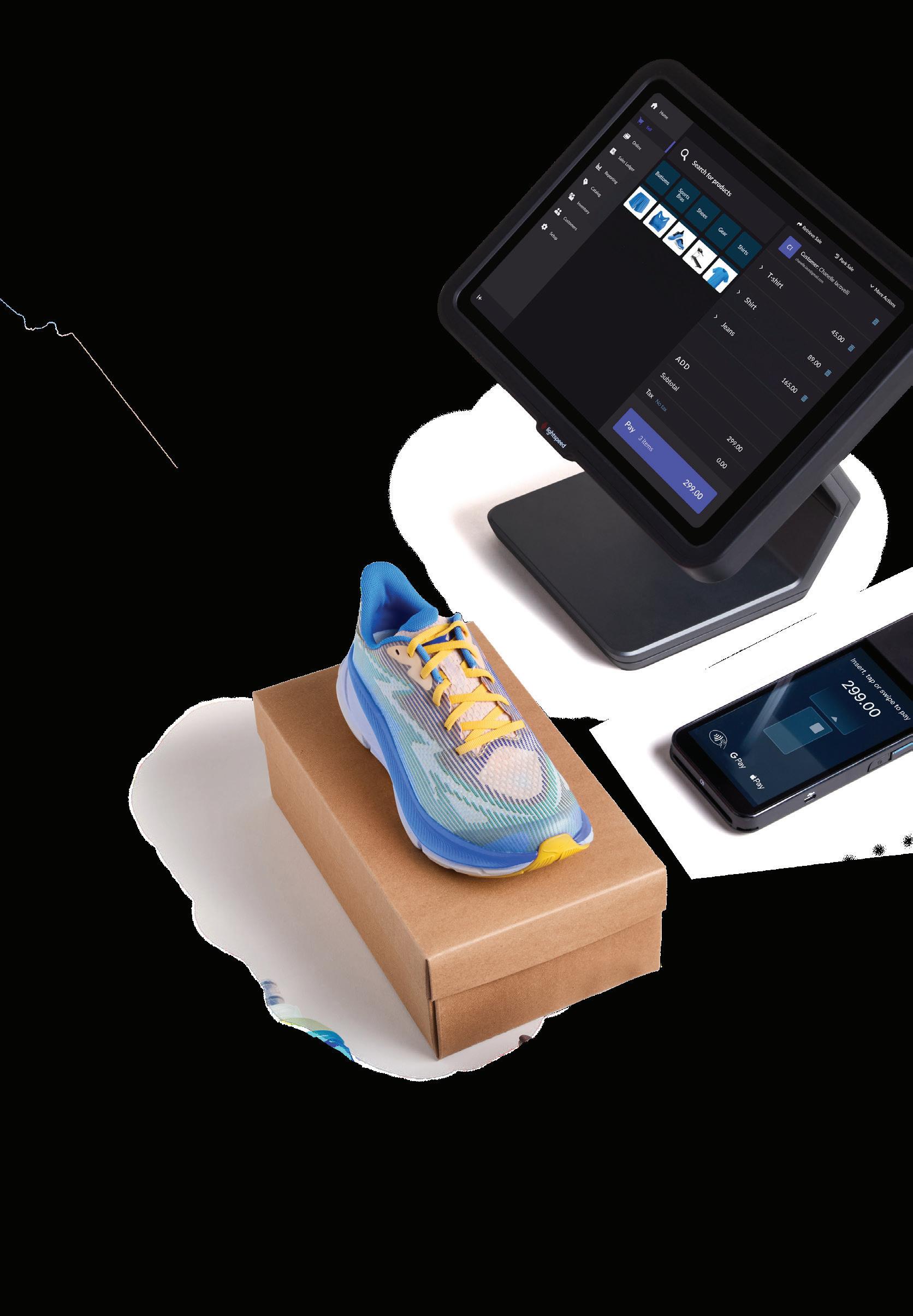
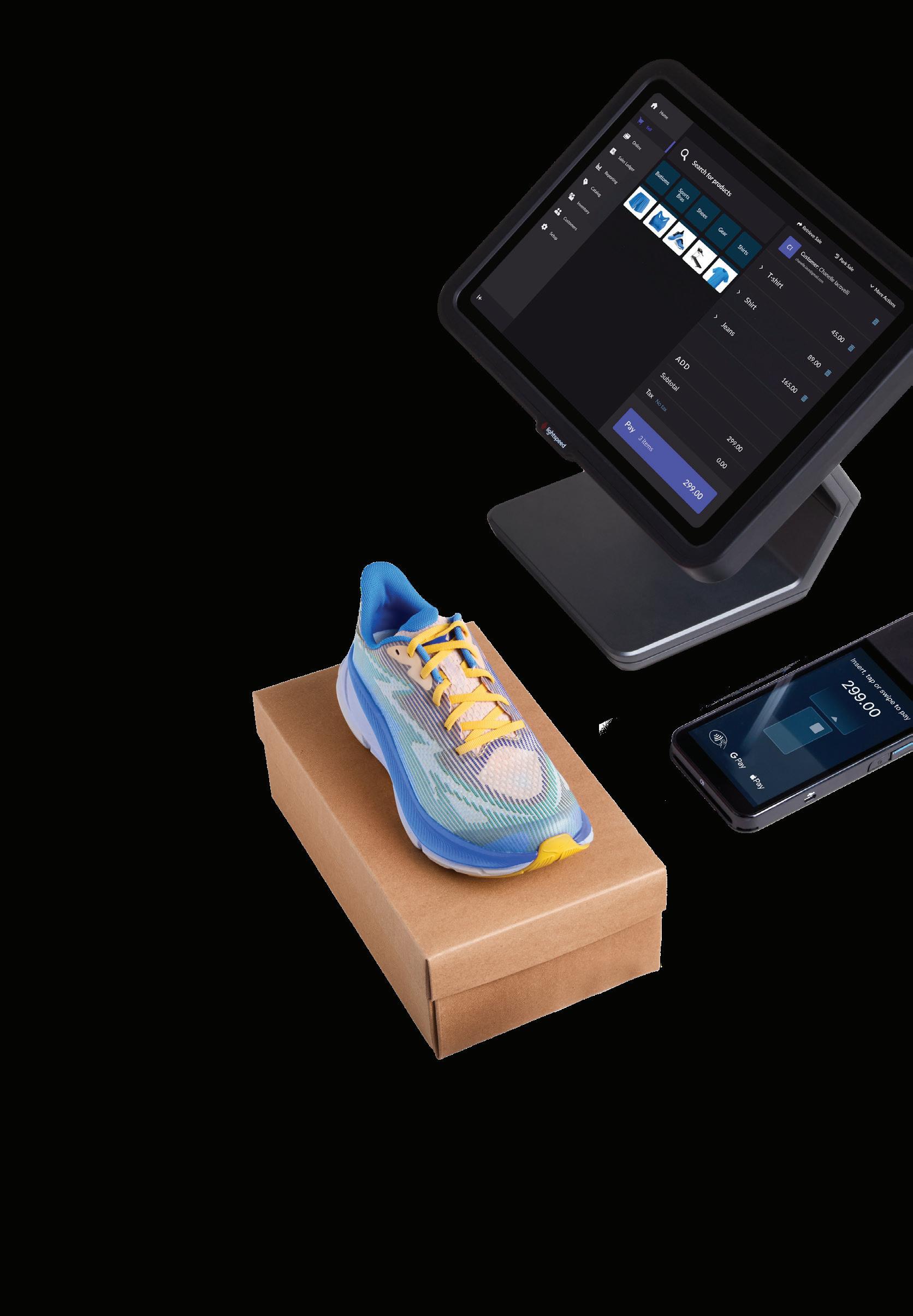
Selling the Triathlon Dream (continued)
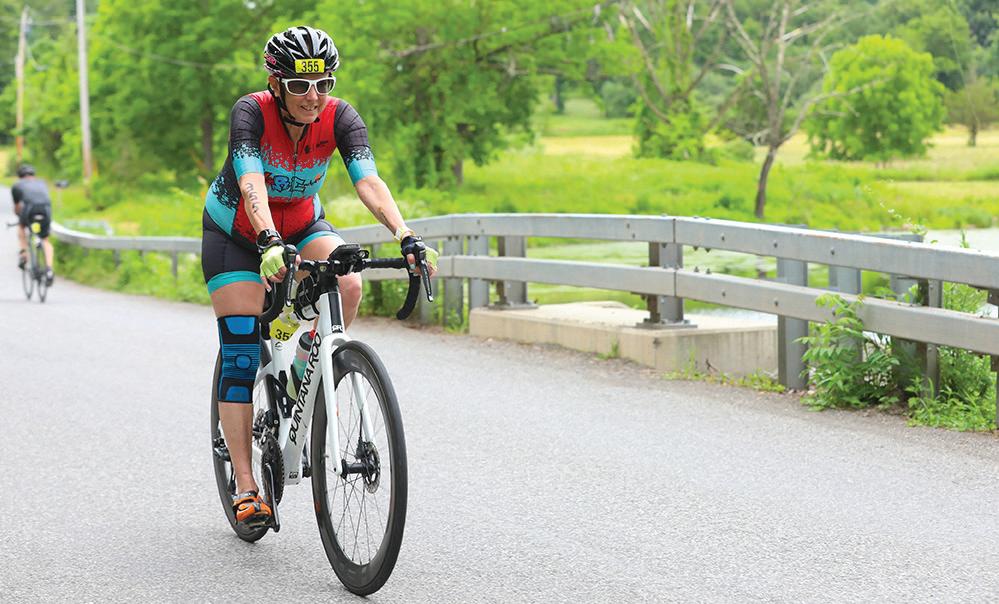
Consider offering entry-level to mid-range options and think about hosting a “Clipping In/ Out” clinic to help ease their fears.
3. Apparel: The All-in-One Solution
If stocking bike cleats and bike shoes is out of budget, at the very least introduce them to triathlon-specific apparel. A tri-suit is often a revelation for newcomers. Explain how these garments are designed to be worn for all three disciplines, with a quick-drying chamois that offers comfort on the bike without feeling bulky during the run.
Consider offering storebranded race kits and jackets. These items not only fill the gap, but also promote your store’s identity within the triathlon community. One of the local running shops on Long Island, NY, where I live, provides team gear and has strong branding at local triathlon races.
4. Accessories: The Small Things That Make a Big Difference
The list of accessories may seem endless, so prioritize the essentials first. This includes:
• Swim – goggles (with different tints for pool and open water), swim caps and antichafing balm.
• Bike Essentials – helmets (a mandatory safety item), hydration systems (bottle cages or aerodynamic bottles), a basic bike repair kit and a floor pump.
• Transitions – a race belt for easy attachment of their number and quick-tie elastic laces for their running shoes to save valuable seconds in transition.
5. Tech Gear: Tracking Progress Across Three Sports
Many runners already use a GPS watch, but they may need to upgrade to a multi-sport model. Highlight watches that can seamlessly track swim, bike and run activities, offering features
such as open-water swim tracking and heart rate monitoring. As they progress, you can introduce more advanced tech like cycling power meters and smart trainers.
6. Creating a Triathlon-Friendly In-Store Experience
Your physical store should be a welcoming environment that builds confidence. It’s about creating experiences that educate and connect, turning your four walls into a community hub for aspiring triathletes.
7. Evolve Your Run Club
Your current run club is an excellent starting point. Broaden its scope to include triathlonrelated activities. Collaborate with a local swim coach to host a series of clinics at a nearby pool or set up a weekly group bike ride on a safe, beginnerfriendly route. These “brick” workouts – biking immediately followed by running – are a key
part of triathlon training and a great way to foster a sense of community.
8. Have a Few Triathlon Books in Your Store
If you already have some running-related books that you sell in your store, consider adding a few triathlon-related books, such as “Unlocking the Triathlon: A Beginner’s Guide to Competing in a Triathlon,” published by Meyer & Meyer Sport. There are many excellent running and triathlon books that you might consider stocking in your shop.
9. Host Workshops and Clinics
Consider finding a local triathlon coach or an expert. In 2026, I will be speaking at several running stores, including Runner’s Roost in Colorado and the Runner’s Edge in Huntington, Long Island. Topics could include:
• Triathlon 101. Covering the basics of race day, nutrition and training.
• Transition Clinic. Create a simulated transition zone in your store or parking lot and teach athletes how to smoothly move from swim to bike and bike to run.
• Basic Bike Maintenance. Teach them how to fix a flat tire, clean their chain and perform simple pre-ride safety checks.
10. Invest in Expert Staff
Make sure your team can handle triathlon-related questions. Consider providing training for your staff or, better yet, hiring someone with triathlon experience. When a customer asks about wetsuit fit or bike sizing, having a knowledgeable staff member who has
“been there” offers immediate credibility and fosters strong trust. (Even if you don’t sell these products in-house, offering that expertise is good customer service.)
11. Building Community and Loyalty
The shift to triathlon focuses equally on community and gear. Retailers who effectively nurture this feeling of belonging build lifelong customers.
12. Sponsor and Support Local Events
Get involved in the local triathlon scene. Sponsor a beginner-friendly sprint triathlon or have a presence at the race expo for larger events. Simply being there to cheer on your customers can make a huge difference. This shows you are invested in their success beyond the initial sale.
13. Engage on Social Media
Use your social media channels to become a source of information and inspiration. Share training tips, celebrate customer race finishes (with their permission) and post videos explaining different pieces of gear. Create a Facebook group for your store’s “tri-club” where members can ask questions, organize group workouts, and share their progress.
14.
Feature Customer Stories
Highlight stories of community runners who have finished their first triathlon. Share their experiences on your blog or social media. This genuine content is highly motivating for others starting out and strengthens your store’s role as a key part of their journey.
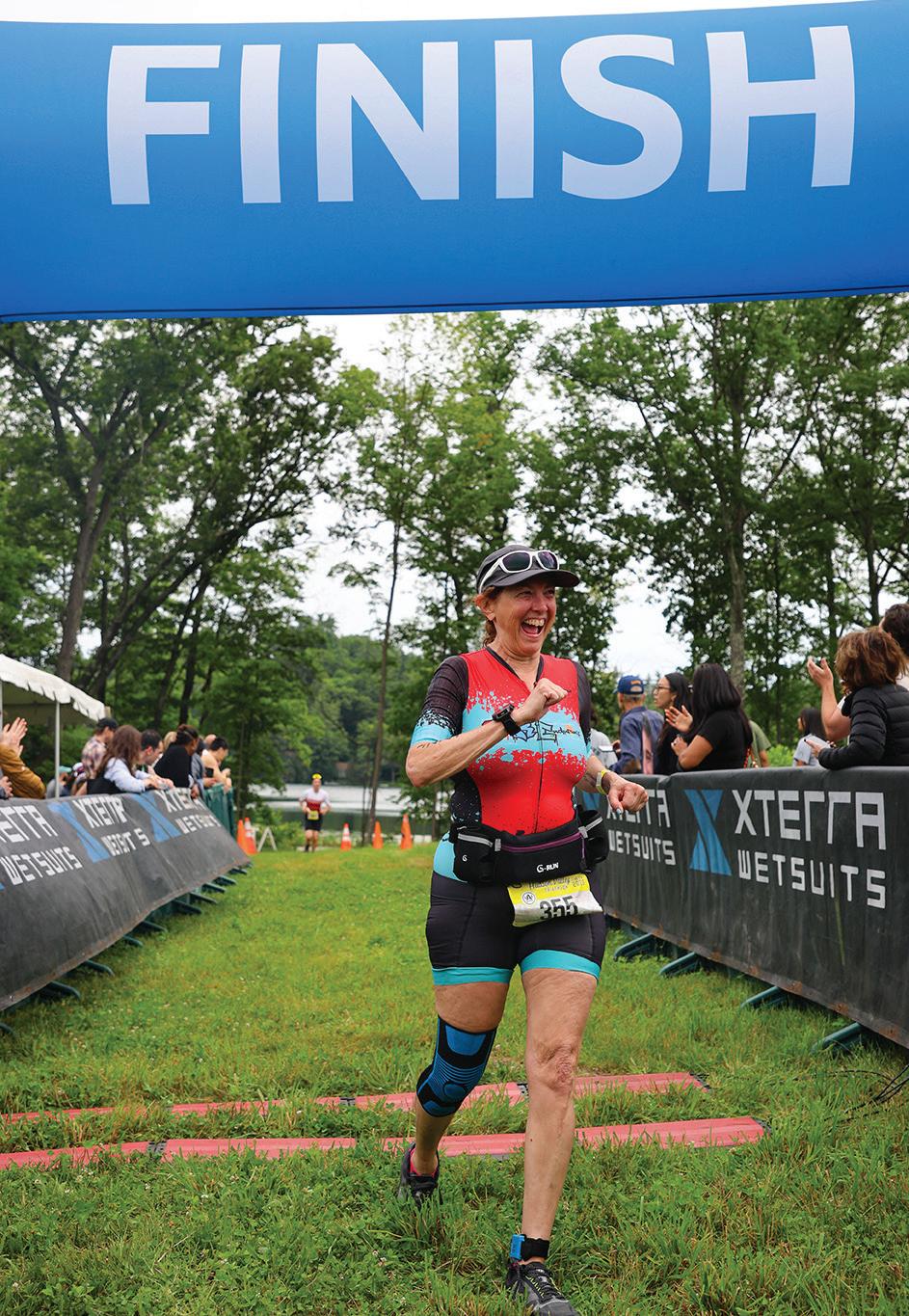
In my new book, “Unlocking the Triathlon,” I share stories from dozens of first-time triathletes, including both professional and age-group athletes. They are all inspiring and will motivate your runners to try out a triathlon.
THE BUSINESS OPPORTUNITY FOR RETAILERS
Supporting the transition from runner to triathlete isn’t just beneficial for the community. It’s also great for business. These athletes tend to have a higher lifetime value than those who stick to a single sport. A
runner might purchase one or two pairs of shoes annually, but a triathlete requires gear for three different sports, as well as nutrition, accessories and tech.
By becoming a trusted resource, you foster long-term loyalty that goes beyond price. These athletes will return to your store for advice, service and upgrades. You also establish your brand as a forward-thinking leader in the endurance sports market.
As the popularity of triathlons continues to rise, your store will be ideally positioned to meet
the demand, equipped with the right products, knowledge and community to turn running shoe customers into triathlon champions. n
About the author: Hilary JM Topper, MPA, is a USA Triathlon Coach Level 1, USMS Swim Coach Level 3, WOWSA Open Water Swim Coach, and RRCA Run Coach Level 1. She actively blogs on ATriathletesDiary.com and maintains a lifestyle blog at HilaryTopper.com. Her first book, “From Couch Potato to Endurance Athlete – A Portrait of a Non-Athletic Triathlete,” was published by Meyer & Meyer Sports in 2022. Her upcoming book, “Unlocking the Triathlon: A Beginner’s Guide to Competing in a Triathlon,” will be released in November, 2025, during which she will tour various cities across the country promoting it. For questions or to invite Hilary for a presentation at your store, contact her via email at Hilary@hjmt.com or call 516-220-3110.
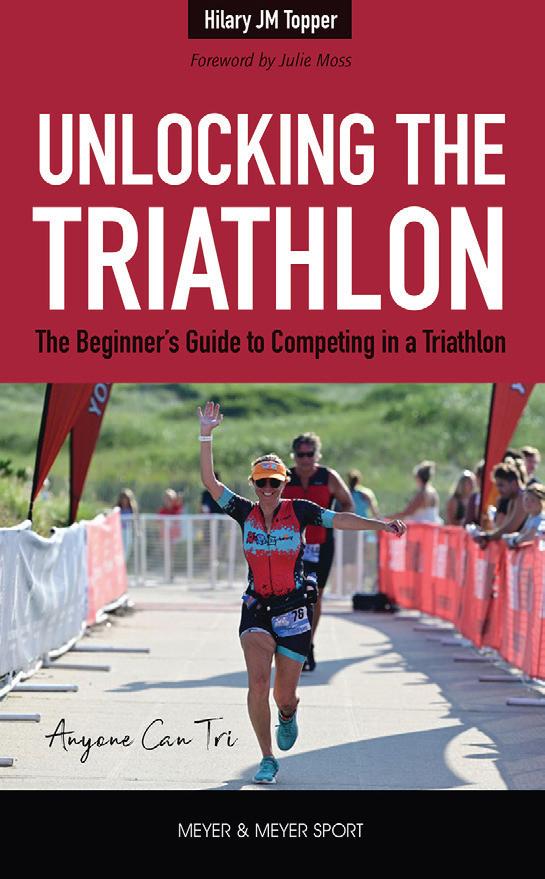
Lowdown from Down Under The Racing Issue
An Australian runner shares how U.S. running community can learn from the Aussies.
Aussies do things differently. Australian run culture proves that. In fact, there are a few things Americans can learn from the runners down under.
First, community is at the center of it. Bringing people together through run clubs and races, running can be a group activity no matter the skill level. And training is everything. Whether it’s a 5K or a triathlon, Aussies take training very seriously. Training culture is heavily community-based in Australia. There are both paid and free options for training for events.
Marathons and triathlons (including Ironman) have grown in popularity so much in recent years that both the Sydney and Melbourne marathon sellout within hours on the launch day. It is as hard to get a marathon entry as it is to get tickets to see Taylor Swift.
And much like in the U.S. wellness and recovery are a priority. Aussie-built brands like 2XU (which helped put this story together) are well known for helping athletes in their fitness journey with their performance and recovery compression apparel. Wellness and recovery are trending now more than ever in Australia, with an emphasis on recovery being just as important as the actual training.
To get the lowdown from Down Under, Running Insight got in touch with Aussie running star Petera “Putts” Tamarua, who is also co-founder of Unify Training Club, a boutique boxing strength, and running gym opening soon in Melbourne. Running has been a big part of his training journey. Let’s hear some advice from Putts in his own words on Aussie run culture and how it could translate into America.
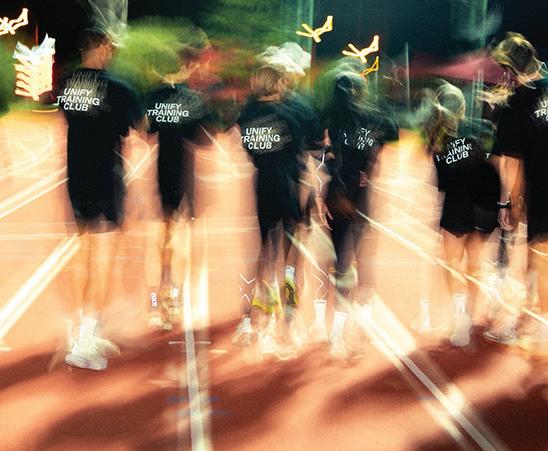
A running and training routine. Running is the backbone of my weekly training. I’ll usually hit one threshold or speed session, one long run and a couple of easy runs to keep the legs turning over. Strength training is the key piece that supports it all — building durability, preventing injuries and making sure I can stay consistent week after week. Boxing rounds out my overall conditioning, but running is what everything else is built around.
Aussie versus American running culture. In Australia, I reckon running is heavily community-driven and social. Run clubs here are just as much about turning up, meeting people and grabbing a coffee
afterwards as they are about the actual session. In the U.S., from what I see, it often feels more competitive and eventbased, with a bigger focus on racing and performance outcomes.
Why that is. I think it comes down to Australia’s lifestyle, climate and laidback culture, which make running more accessible and social. We’ve got great weather for most of the year, iconic locations (particularly in Melbourne) like the Tan or coastal paths and a culture where people enjoy starting their weekends with movement and community.
It’s about connection. Because of that, running here is as much about
connection as it is about performance. You can be chasing a PB one week and just jogging for coffee the next — and both are equally celebrated. That balance keeps people engaged for the long run, rather than burning out on competition alone.
What the U.S. could learn. From the outside looking in, one thing I notice is how much our run culture here blends performance with community. We’ll chase PBs and push hard in sessions, but just as important is sticking around afterwards — whether that’s grabbing a coffee, connecting with others or celebrating the small wins. That social side is what keeps people coming back each week. That balance of competition and connection is something really special here in Australia.
Run clubs in Australia. Run clubs are the heartbeat of the Australian running scene. They’ve shifted running from being something people used to do mostly on their own into something social and accessible. Over the last five to 10 years, we’ve seen an explosion of new clubs, collectives and crews that cater to everyone — from first-timers to experienced marathoners.
More than running. Run clubs have become more than just a place to train. They’re communities where people form friendships, build consistency and find accountability. For many, joining a run club is the first step into the sport
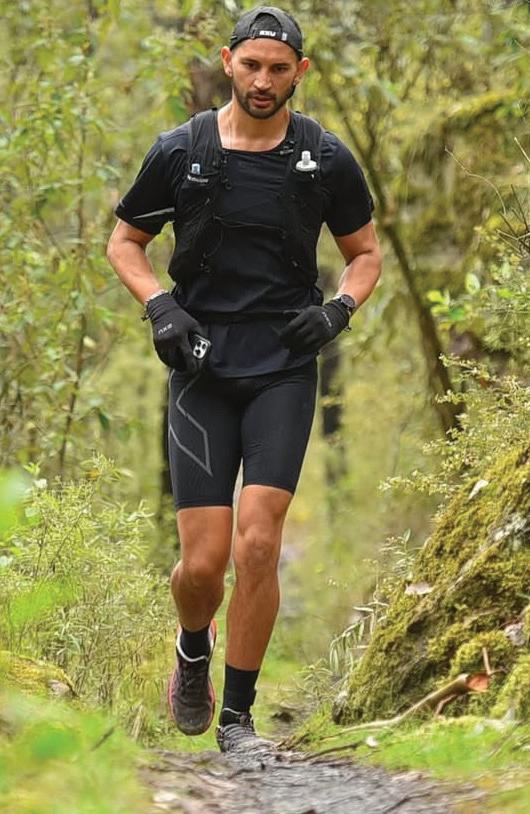
and that’s why they’ve become such a big part of the culture here.
The running store connection
There’s a really natural connection between clubs and running stores in Australia. Stores often provide the expertise, access to the latest gear and even spaces for education or talks. Clubs bring in the people and the energy. At our 6 at 6 Run Club, we’ve had support from local stores through shoe trials, product demos and activations. It’s not just about selling shoes
— it’s about giving runners the chance to test and learn in a real-world environment with their community around them.
Benefits for clubs and stores. The benefits flow both ways. For clubs, the obvious benefit is access — to gear, to knowledge and to opportunities that help runners grow. It also gives the club credibility, because when a trusted store gets behind a run crew it shows that what’s happening is authentic and worthwhile.
For stores, the benefit is connection. They’re not just selling products off a shelf — they’re embedding themselves into a community of runners who value genuine relationships. That’s far more powerful than any marketing campaign.
Aussie clubs and stores. The relationship between clubs and stores in Australia is really positive. When it’s authentic, it doesn’t feel transactional — it feels like the right brands and stores supporting the right communities.
A Win-Win. Of course, the best partnerships are the ones where both sides respect each other’s role: the store isn’t trying to “own” the club and the club recognizes the value the store brings. When that balance is there, it creates a win-win where everyone benefits, especially the runners.
Looking to Amierca. I haven’t had the chance to race in America yet, but from the outside it looks like the scale is on another level. The atmosphere, the crowds and the production of big U.S. events seem huge compared to the more intimate races we’re used to in Australia.
Running goals for 2026. I’m aiming to run a sub-3:00 marathon, ticking off a miler event while continuing to grow the Unify Training Club community. Achieving that means balancing my own training with building the space and culture around it. n
Higher Education
What’s resonating with the high school running crowd these days? /
By Danny Smith

The manager of Dick Pond Athletics in Park Ridge, IL, Chris Wilhite often spends August and September traveling to schools with the Dick Pond “shoemobile.” He will attend a high school cross-country invitational every Saturday from late August through early November. And his phone includes the numbers of nearly 250 local coaches, many of whom share perspective and information driving Wilhite’s work.
All this is to say Wilhite has a rich
understanding of what’s resonating with the contemporary high school crowd. He notes trends and observes habits, calling today’s runners educated and sophisticated.
“They’re bigger nerds than ever, which I mean in the nicest way possible,” he says.
“They absolutely know what’s coming out and available and want to know more.”
High schoolers’ surging awareness of running products and training as well as their commitment to general fashion trends are driving notable movements in the run
specialty marketplace. Wilhite and other running retailers discuss what they’re seeing with today’s teens.
A GREATER WILLINGNESS TO EXPERIMENT WITH FOOTWEAR BRANDS. Study the starting line at a high school cross-country invitational a decade ago and Dylan Dombi of Ohio-based Second Sole says you might see three footwear brands represented. Today, however, Dombi sees upwards of 10 brands on the feet of runners.
“More than ever, kids are willing to try new things and they’re finding a lot to experiment with because every brand is focused on youth and working to create a dynamic, fun sensation,” Dombi says.
ONE SHOE, TWO SHOES. More than ever, prep harriers understand the distinct use cases for different footwear – if not by a coach’s or teammate’s suggestion, then through personal experience.
“A lot of high schoolers enjoy the max cushioning shoe for a long run but realize it’s not the best when they start running 400s in the same shoe,” says Brendan Barrett, co-owner of Sayville Running Company and Smithtown Running Company in Long Island, NY.
For the more competitive and invested athletes or those who “define” themselves by the sport, Barrett sees a growing number purchasing two pairs of shoes, often a workhorse daily trainer and a faster speed shoe.
Other running retailers observe similar behavior.
Craig Segal, owner of The Outpost Running and Walking Co. in Little Silver, NJ, notices many athletes at nearby Christian Brothers Academy, one of the nation’s top-ranked boys’ programs, investing in a rotation of shoes for different use cases, from recovery to speed workouts.
Ditto at the 10-store Runners Roost chain in Colorado.
“They’re wanting a few pieces of footwear in their quiver,” Runners Roost owner Kent Wories says of the area’s most enthusiastic prep harriers.
And the same at Dick Pond, which operates five retail stores
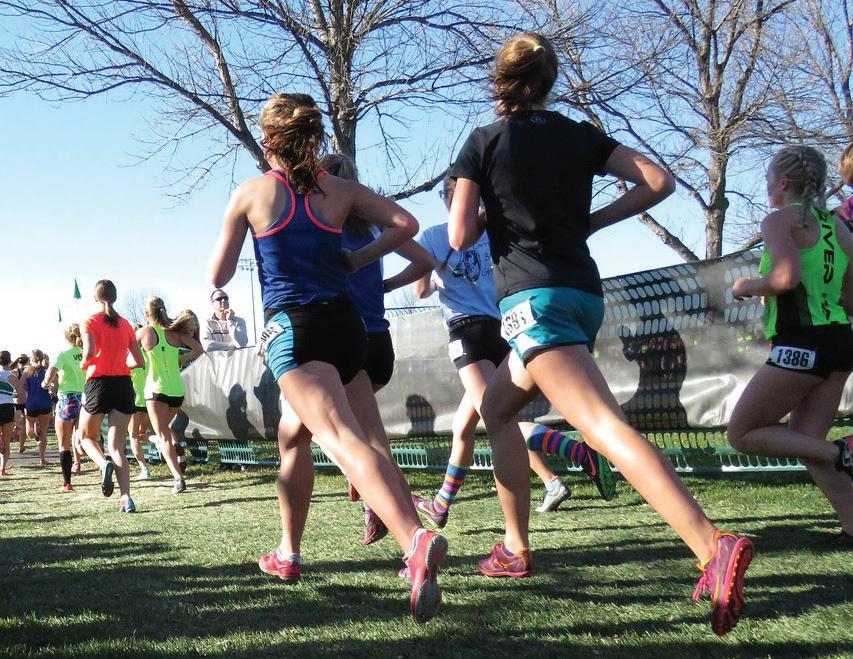
in suburban Chicago. Though Wilhite says not every athlete is purchasing two models for the season, it’s not an insignificant number, either.
“Parents understand it as well, which means they’re more willing to invest,” Wilhite adds. Meanwhile, Second Sole, which has eight stores across
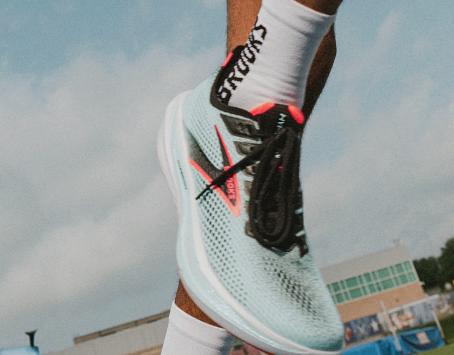
northern Ohio, has tapped into this growing phenomenon by hosting in-store coaches’ clinics in which staff discuss how athletes can incorporate multiple pieces of footwear into their training regime.
THE BANG-FOR-THE-BUCK TRAINER.
Not every prep harrier, of course, is plunking down $300-400 for two trainers.
For those new to the sport, those with a strict budget or athletes who haven’t been hard bit by the cross-country bug just yet, there’s heavy interest in “bang-for-your-buck” training shoes. With models like the New Balance Rebel, the ASICS Novablast, the Mizuno Neo Zen and the Brooks Hyperion (photo left), athletes appreciate getting
Higher Education (continued)
a lively, fast ride and seasonlong durability at a reasonably accessible price point.
Wories says the “energy” footwear silo is a good match for what intrigues the broader high school market, namely shoes that can work as well for an uptempo run and speed work as a 60-minute run.
THE SUPER SHOE TAKEOVER. With the advent of super shoes, Wories has noticed a decline in waffle racer-type shoes and competition-specific spikes.
“In Colorado, we have a lot of firm surfaces for cross-country, including roads. Rather than going with the traditional waffle, we’re seeing more kids opt for racing in Vaporflys, Endorphin Pros and other plated shoes,” he says.
Wories acknowledges his observation is rather locationspecific, but it supports a larger trend others have noticed – that is, youth embracing super shoes and, in some cases, multiple footwear models for a cross country or track season.
BEST
TO INGEST. The nutrition category at run shops has largely been the domain of adult customers, particularly those training for half and full marathons. As high schoolers’ knowledge about footwear has soared, so, too, has their awareness of nutrition climbed amid a more intense commitment to optimize their training.
They’re purchasing electrolyte drinks to help them power through a long run in the heat, inquiring about protein-packed recovery drinks and even grabbing an energy gel for a 10-mile run.
“Many of them know a bit
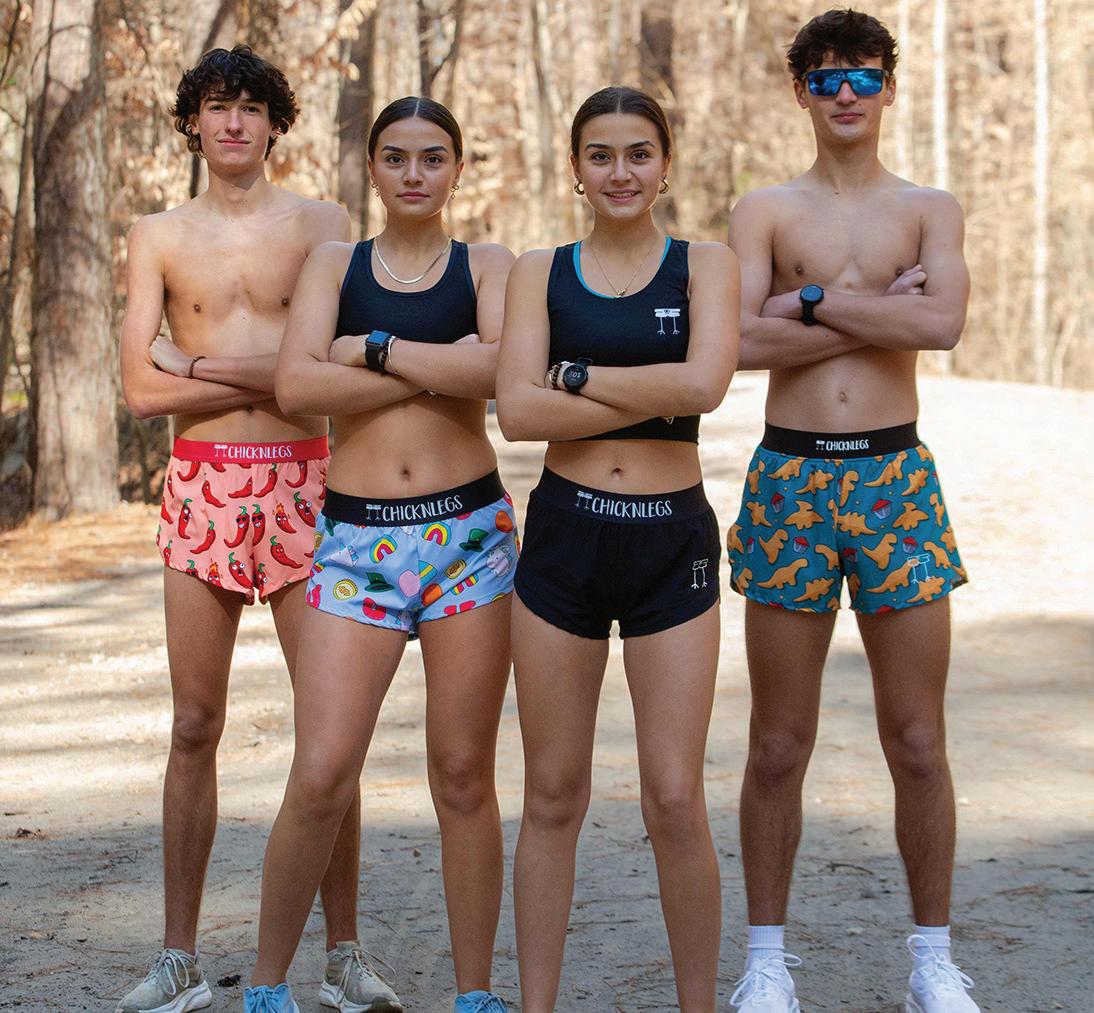
already and are curious to learn more,” Barrett says of teens and nutrition. “They’re cognizant of, asking about and interacting with nutrition in a way they weren’t 5-10 years ago.”
HIGHER HOSIERY.
In a surprising turn, at least for someone who grew up in the era of low-cut and no-show socks, Barrett notes the popularity of crew length and mini-crew socks amongst the high school crowd. He first observed it a few years back; now, though, the crew sock is ubiquitous.
And Barrett has a theory:
“Whatever sock your dad wore at your age, wear the opposite.” Fashion, it is said, is cyclical, so Barrett’s tongue-in-cheek speculation might not be far off.
WACKY SHORTS AND GROUP BUYING.
Once upon a time, Wilhite would sell trainers and spikes at cross-country invitationals, particularly earlyseason meets. Those product categories, however, don’t move like they once did at out-ofstore venues.
But it’s a different story with fun accessories such as goodr sunglasses and quirky apparel
ala ChicknLegs shorts. With ChicknLegs shorts, in particular, Wilhite says runners know about new releases and are hungry to grab new styles.
“Sometimes, it feels like I’m giving away Taylor Swift concert tickets when I pull out these shorts at a meet,” he says.
A thousand miles away in Colorado, Wories notes a similar phenomenon.
“We don’t sell a whole lot of ChicknLegs in our brick-andmortar stores, but it’s a feeding frenzy-type dynamic when we go out to high school events,” he says. n
The Running Event 2025
EDUCATION EDUCATION EDUCATION EDUCATION EDUCATION EDUCATION EDUCATION EDUCATION EDUCATION EDUCATION EDUCATION EDUCATION EDUCATION EDUCATION EDUCATION EDUCATION EDUCATION EDUCATION EDUCATION EDUCATION EDUCATION EDUCATION EDUCATION EDUCATION EDUCATION EDUCATION EDUCATION EDUCATION EDUCATION EDUCATION EDUCATION EDUCATION EDUCATION EDUCATION EDUCATION EDUCATION EDUCATION EDUCATION EDUCATION EDUCATION EDUCATION
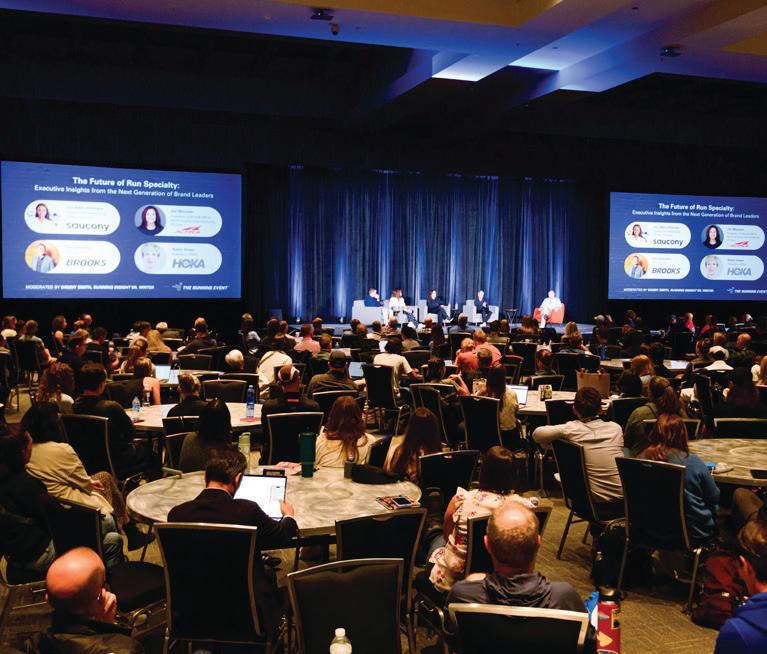
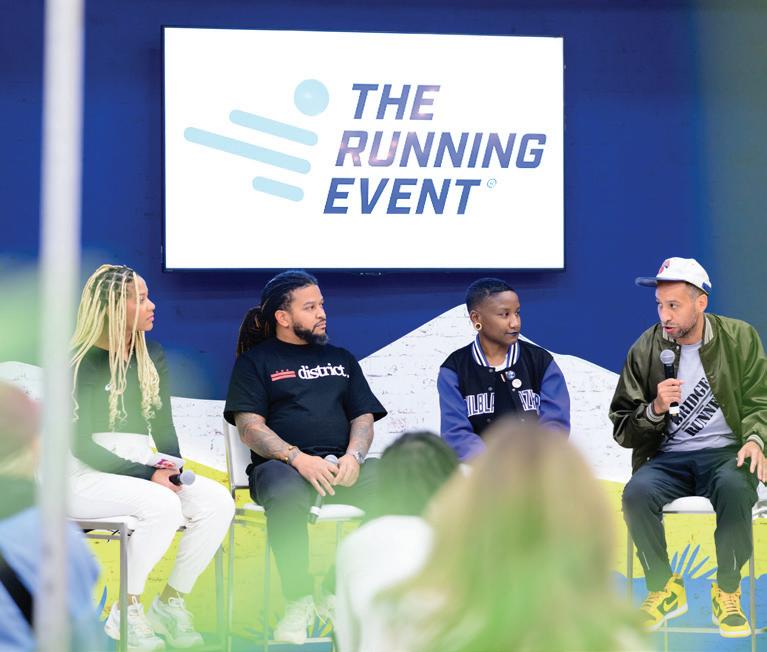
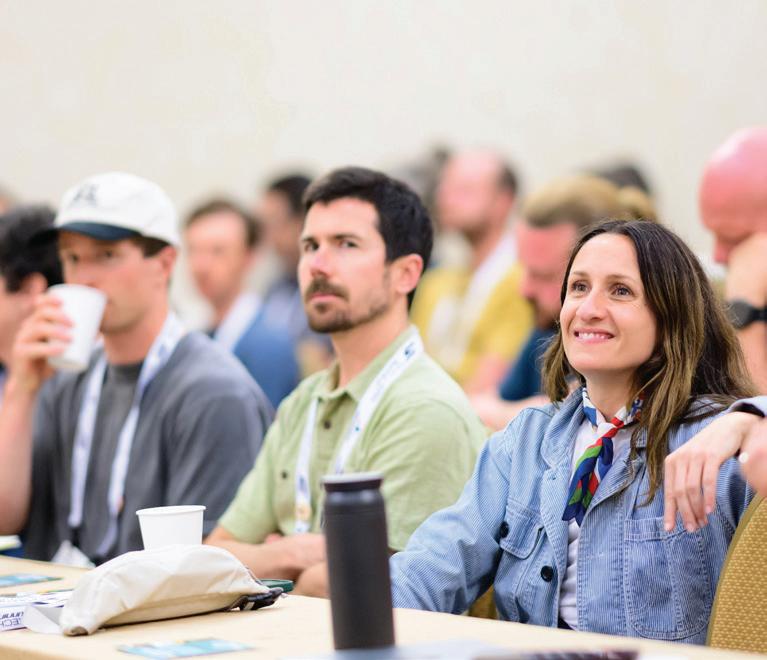


A Grande Coffee Effort
A unique partnership forms between a running retailer and the Kenyan running community. / By Carly Russo
For many, the worlds of elite running and specialty coffee exist in separate spheres. However, a new initiative called Bingwa Coffee is merging the two in a powerful way. Born out of a partnership between U.S. running store owners and Kenyan marathon champions, the brand channels coffee sales into educational and economic opportunities for young runners and farming families in Kenya.
local community. The answer was inspired by Korir’s previous success in creating a dairy co-op that empowered thousands of local farmers. The idea was to apply the same concept to coffee.

The story of Bingwa (meaning “champion” in Swahili) Coffee starts in the heart of the running community. The founders, Emily and Keith Davis, who have owned a Fleet Feet store in Winston-Salem, NC, for nearly two decades and now also in Clemmons, developed a deep connection to Kenya through years of service work. Their journey led them to a partnership with brothers and marathon winners, Wesley (2012 Boston Marathon Winner) and John (2024 Chicago Marathon and 2025 Boston Marathon winner) Korir. The Davises supported the Transcend Running Academy, a school Wesley founded to educate and train talented young runners in his home region in Kenya. Fundraising for a school in Kenya from the U.S. proved challenging. The team needed a new model — one that could create a lasting income stream to support the school and the
“We wanted to create something sustainable,” says Emily Davis. “Fundraising for a school in Kenya is tough, but coffee is something that can provide long-term impact.”
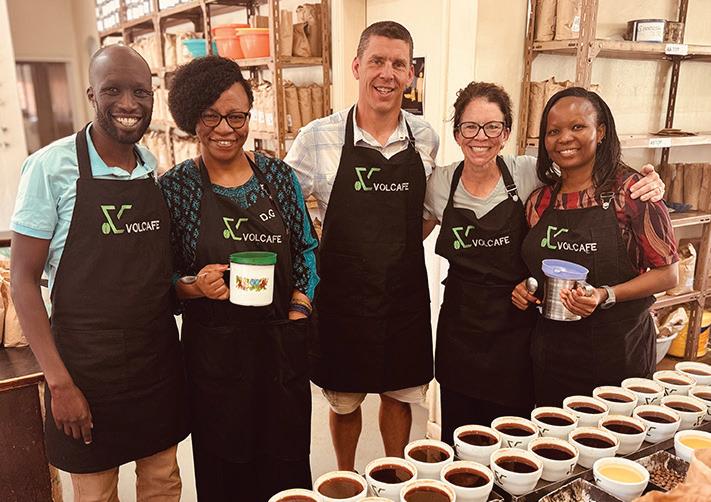
Korir helped local farmers transition from low-profit crops, such as corn, to high-value specialty coffee. This shift provides a path out of generational poverty, giving families the means to afford essentials like a high school education, which is not free in Kenya.
The brand’s connection to running lies at the core of its identity. The journey of a Kenyan runner from a rural village to the podium of a major world marathon is a story of defying incredible odds. These athletes often train with minimal resources, lacking access to the advanced equipment and physical therapy that to which many American athletes are accustomed. Their success is a testament to immense talent and resilience.
“Americans often look at Kenyan runners and say, ‘They’re just so gifted.’ But few people realize the hardship it takes to get there, such as going days without food, training on dirt tracks and not having access to ice baths or PT equipment,” says Davis.
Just as one marathon win can change the entire future for a runner’s family,
transitioning to coffee farming can transform a community. It represents the same pursuit of a better life against challenging circumstances. A portion of the proceeds from every bag of coffee sold goes directly to supporting the Transcend Academy, ensuring that the next generation of Kenyan students and runners has the resources they need to succeed.
In the U.S., the Davises are leveraging their deep roots in the running world to build brand awareness. They are partnering with running stores and appearing at major events, such as The Running Event in Texas, ASICS Run and the Chicago Marathon. The dream is for Bingwa to become the official coffee of major marathons, creating a direct and meaningful connection between the race, the runners and the communities from which many of the champions come.
“Success in the U.S. would be amazing, but the real win is a successful coffee co-op in Kenya. I’m not building Bingwa to feed my family. I’m building it so Kenyan farmers can feed theirs,” says Davis. n
